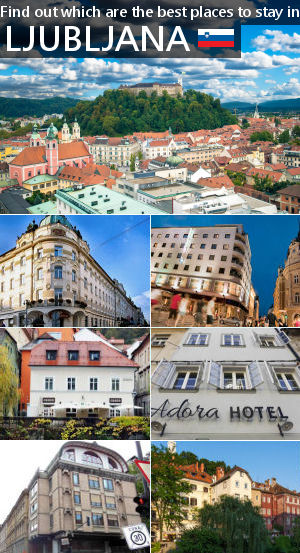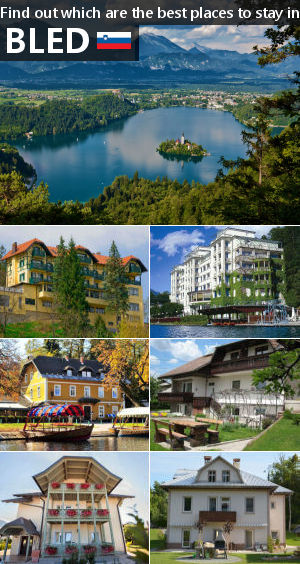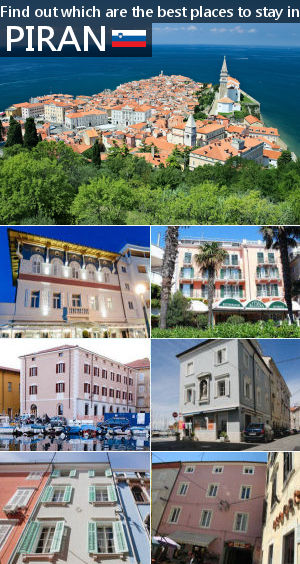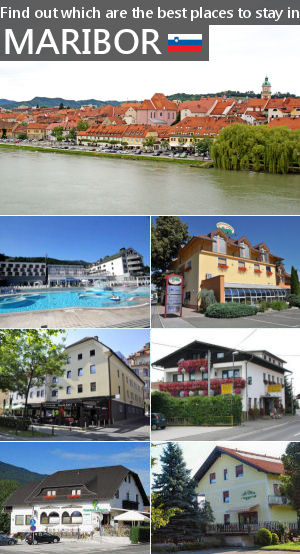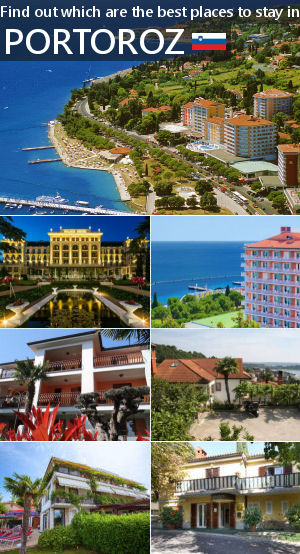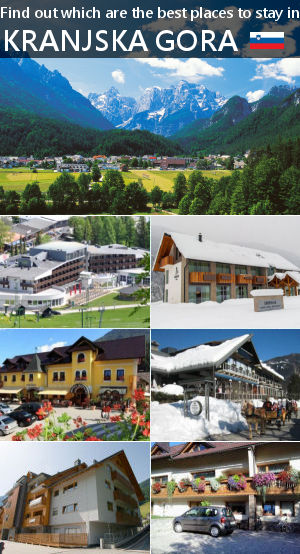About The Postojna Cave
The Postojna Cave is the most remarkable cave system of chambers, halls and passages that are more than 24 kilometres long. It was created by the Pivka River and is almost two million years old. This is such a magical place that it is bound to enchant you. The caves are entered by open train which adds to the experience of depth and adventure as you weave fairly speedily into the cave system. The caves are spectacular and well displayed, with countless stalagmite and stalactite formations – never two the same.
The cave system is really extensive and you only cover a fraction but there is so much to see, and all quite incredible and lit well enough even for photos to be taken. It’s a truly stunning natural attraction, a must see if you are visiting Slovenia. Just don’t forget to bring a jacket as it is cold down there! The cave is located on the northern edge of the town of Postojna in southwestern Slovenia, some 50 kilometres (31 miles) southwest of Slovenia’s capital Ljubljana.
Postojna Cave Photo Gallery
A beautiful picture gallery containing 50 high resolution Postojna Cave photos taken by professional photographers! (photos courtesy of slovenia.info)
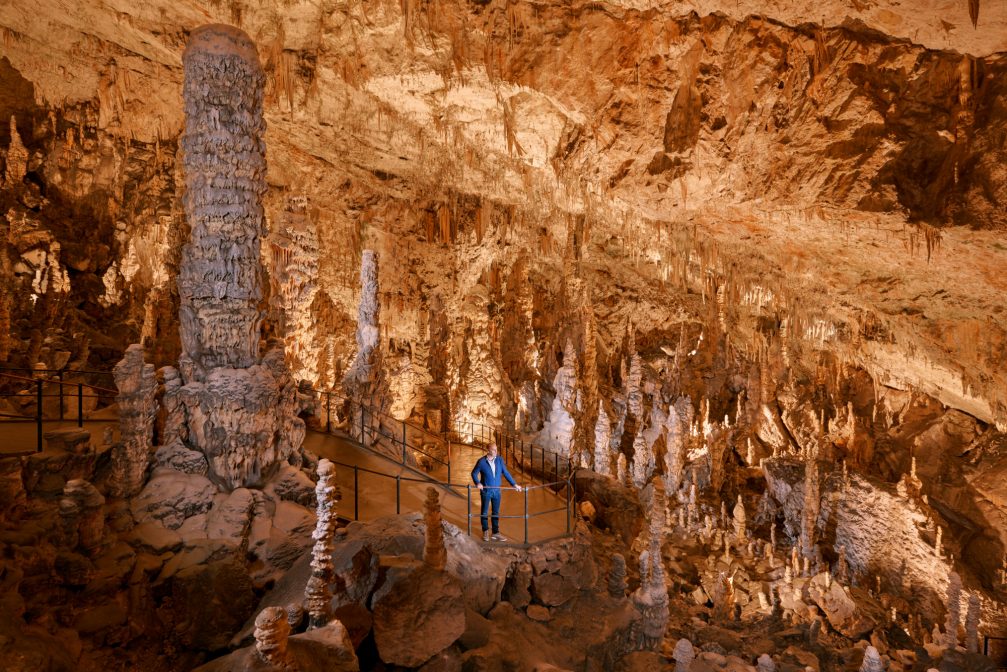
The experience of visiting the Postojna cave is breathtaking. It has to be seen to be believed as you file past millions of years worth of naturally formed stalactites and stalagmites in all different varieties, shapes and colours. (Image by Iztok Medja)
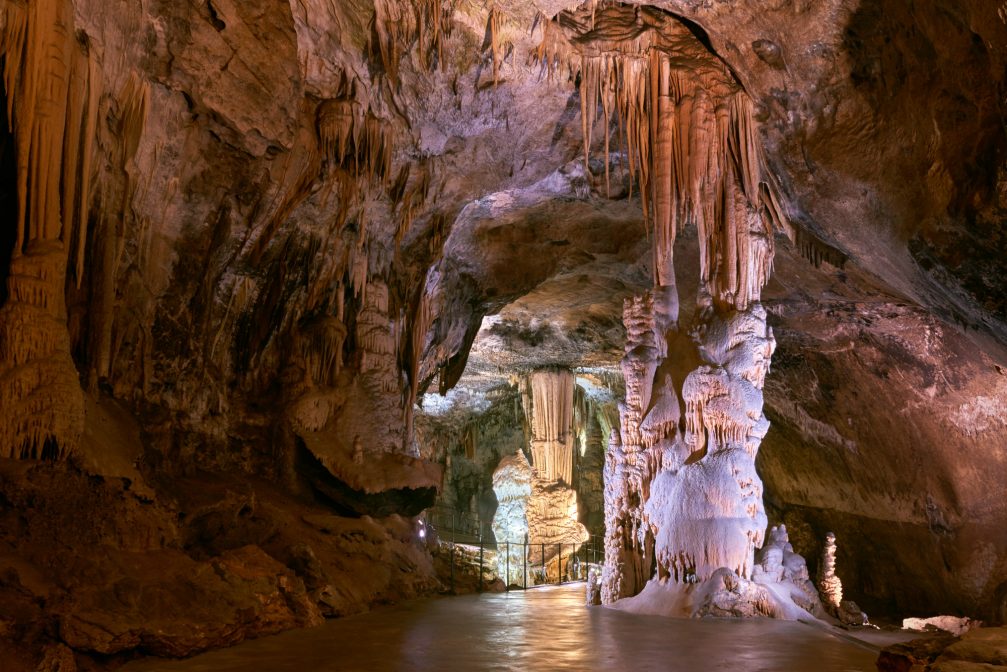
The stalactites and stalagmites in the Postojna cave are amazing. (Image by Iztok Medja)
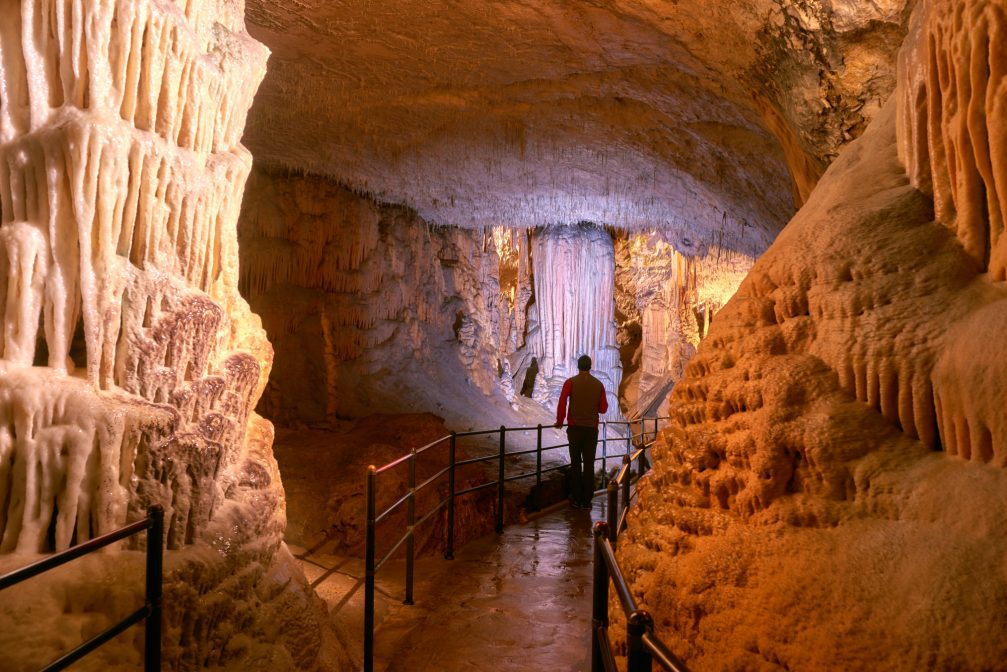
The caves consist of 25 kilometres of wondrously sculpted galleries, chambers and halls of stalagmites and stalactites. (Image by Iztok Medja)
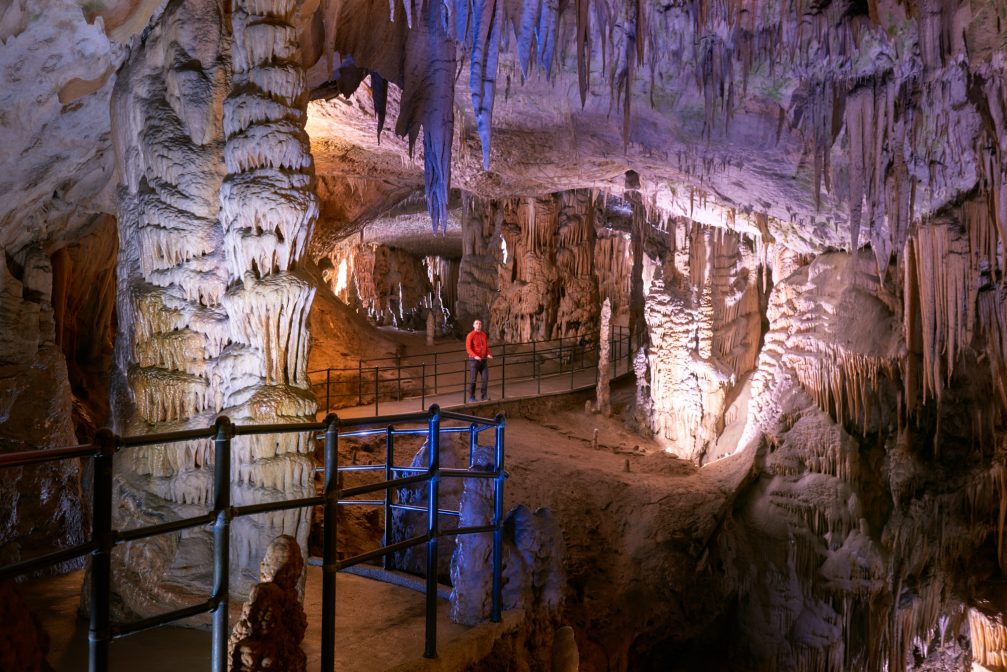
The cave was open to public 200 years ago and have been visited by more than 37 million visitors. (Image by Iztok Medja)
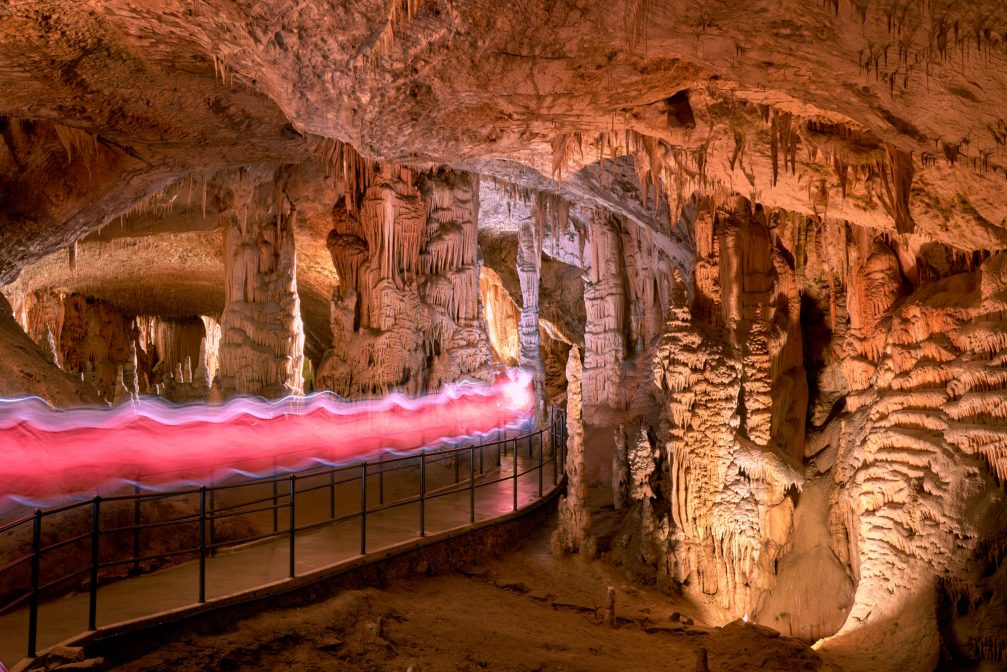
The path is very clean and not so slippery as one would expect. (Image by Iztok Medja)
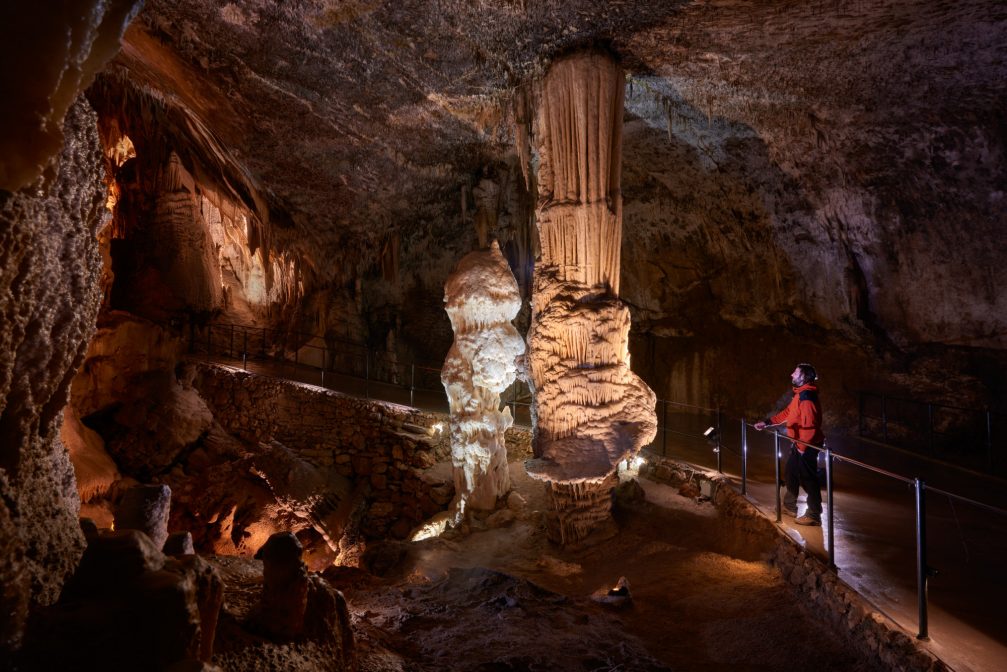
The centre piece of the cave, two sculptures called the Brilliant which also feature on Postojna advertising material. (Image by Iztok Medja)
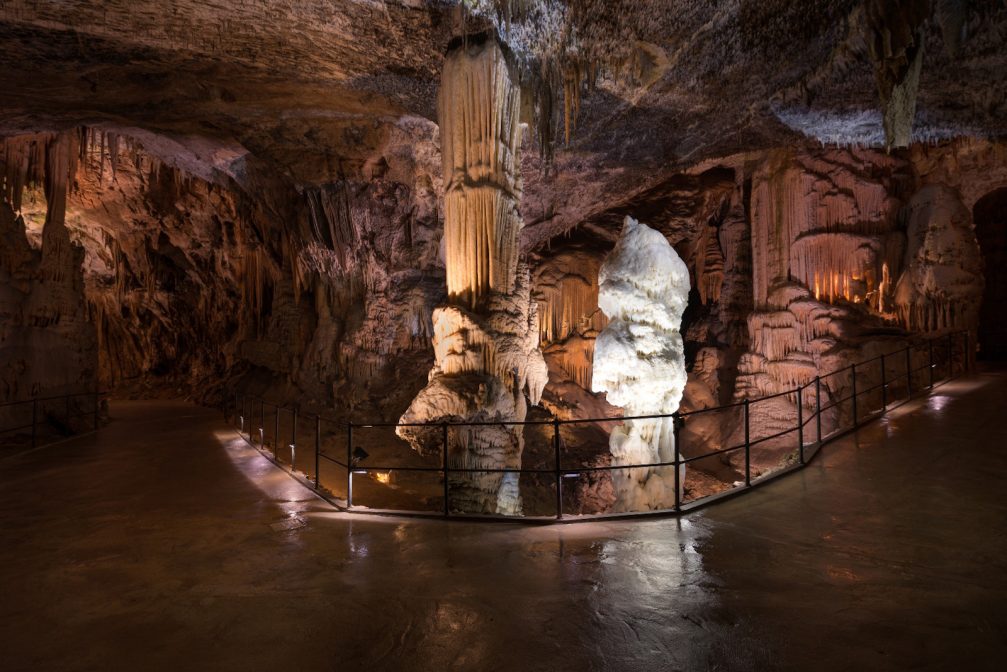
The impressive five-metre-tall bright-white stalagmite called Brilliant (also sometimes called the Diamond) is a symbol of the cave. (Image by Iztok Medja)
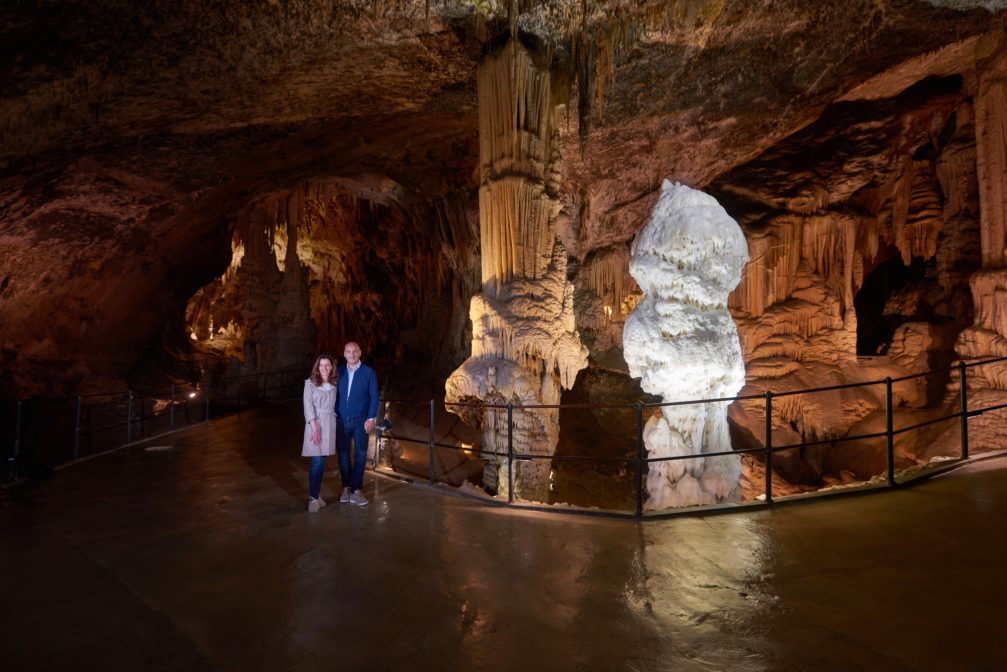
Standing next to the Brilliant stalagmite is an ornament-rich pillar. (Image by Nea Culpa d.o.o.)
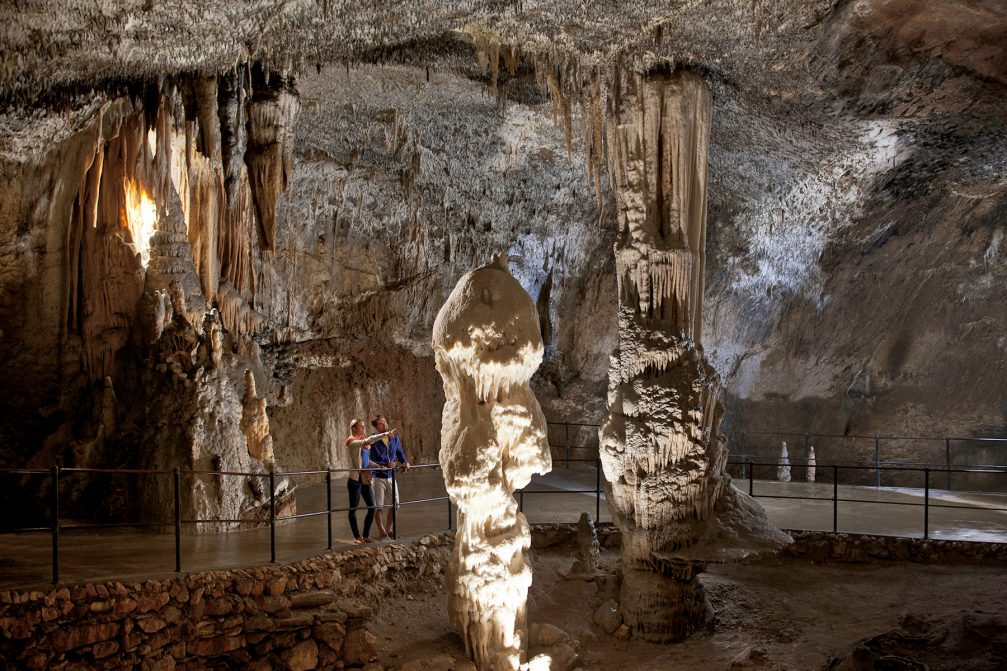
Another photo of the 5 metre, snow-white Brilliant stalagmite and the neighbouring baroque pillar, which have become symbols of the cave. (Image by Dragan Arrigler)
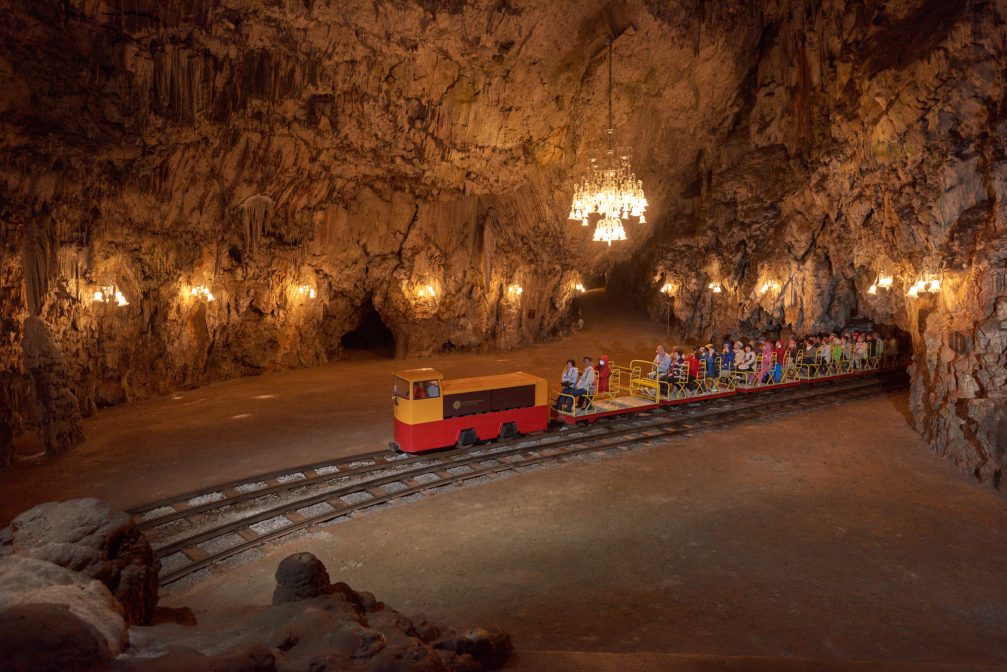
The visit to the caves begins with a 10-minute train journey into the cave, that is enjoyable and full of many stunning highlights. (Image by Iztok Medja)
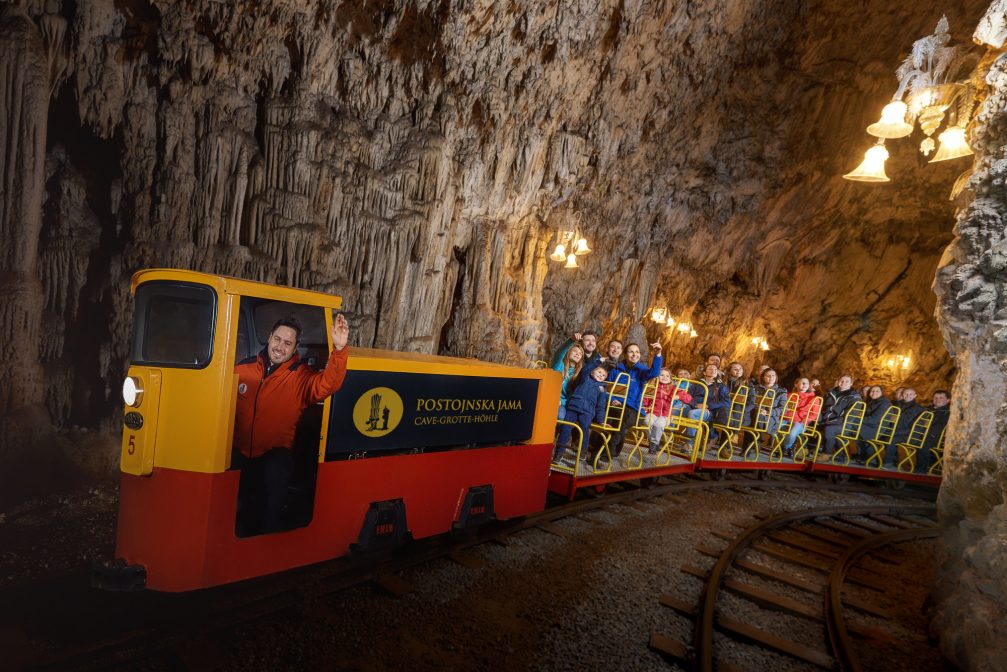
The underground train takes you deep into the guts of the cave, and the scenery is unbelievable. (Image by Iztok Medja)
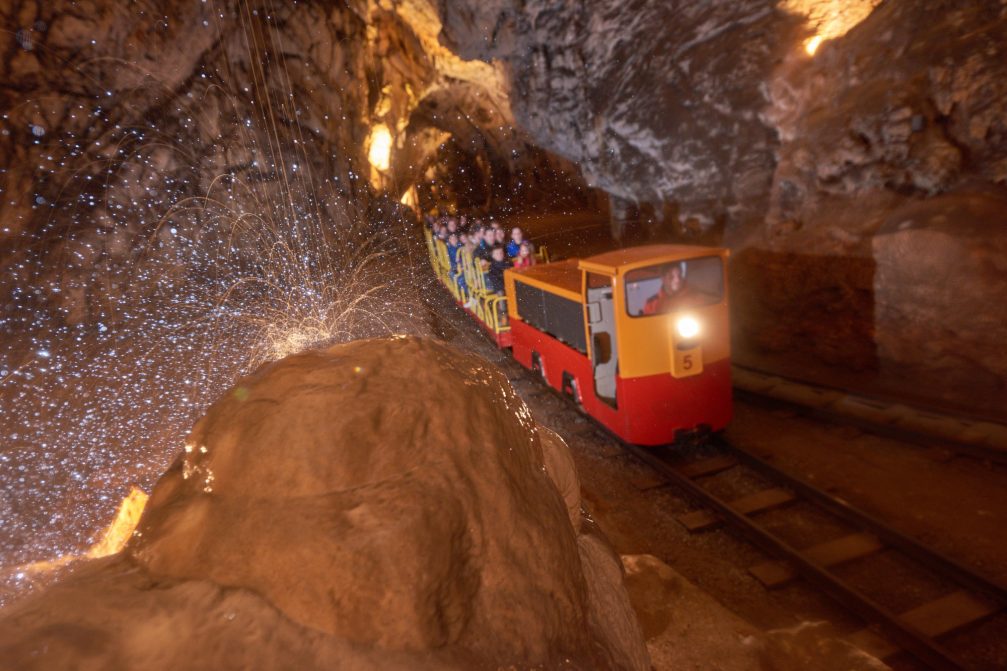
Wear decent shoes and dress warmly, since you sit on an open seated little train that takes you through the first part of the cave fairly swiftly, and the cave is 10 degrees Celsius, high 40s Fahrenheit. (Image by Iztok Medja)
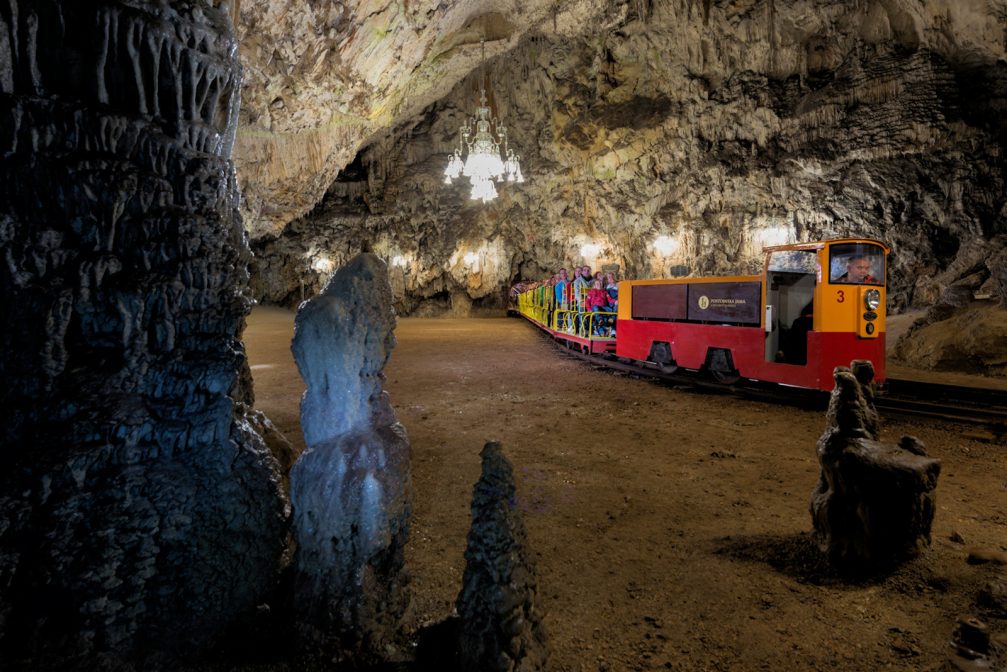
The train that takes you into the cave system is very comfortable and the foot tour that continues was very professional and interesting. (Image by Iztok Medja)
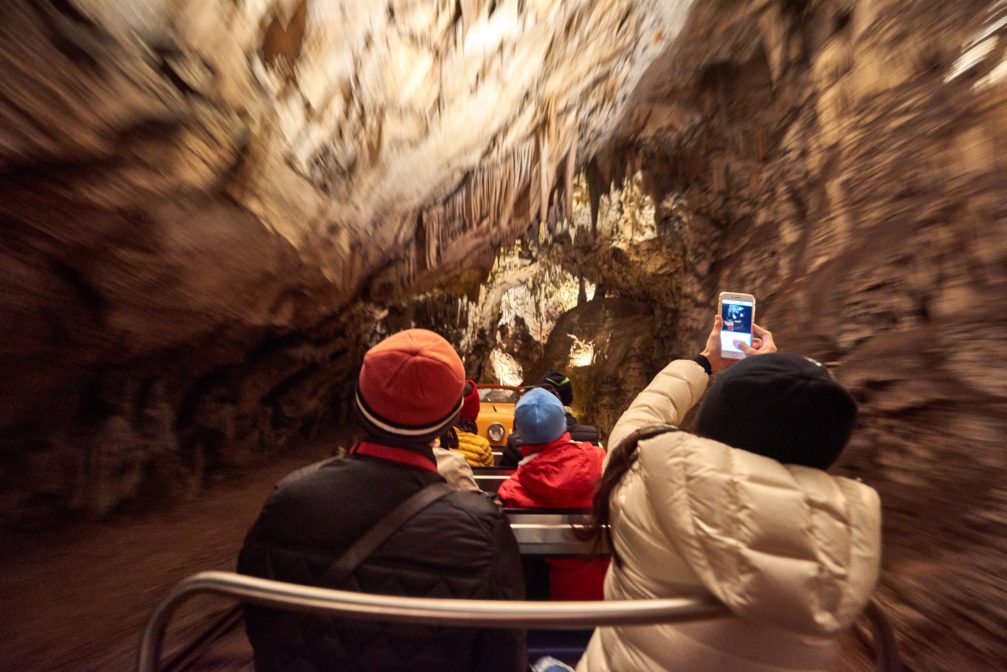
Train seats are two per chair and it’s snug. Bring a light jacket or a sweater as it can get chilly on the train portion of it. (Image by Iztok Medja)
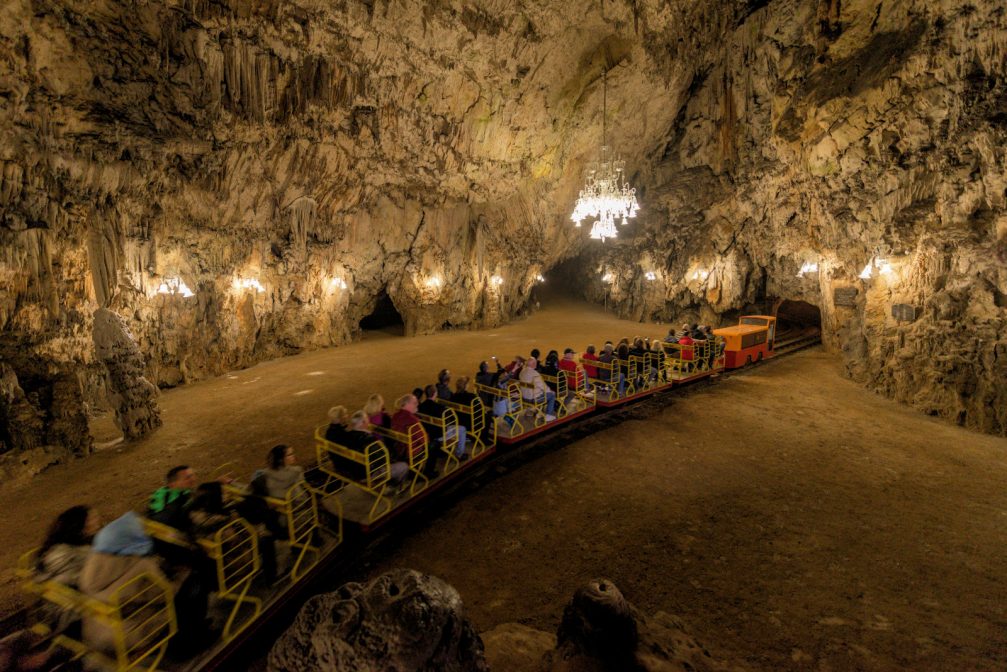
An efficient 10 minute tiny train ride transports you through and past many beautiful sites over two kilometres until you reach the main destination. (Image by Iztok Medja)
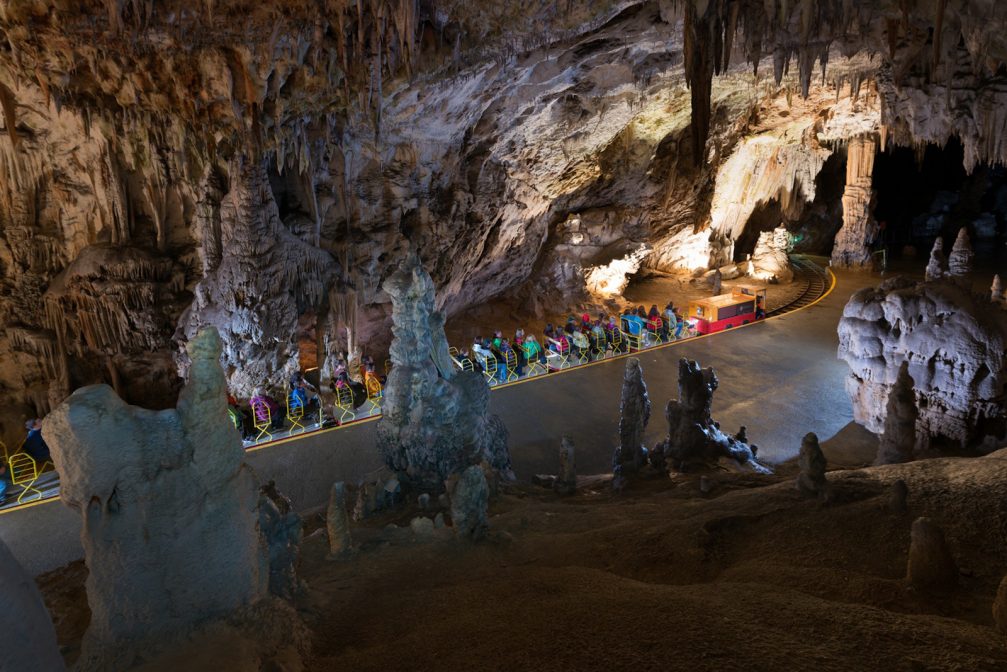
It is true that visiting the cave feels quite ‘touristy’ but something this amazing is bound to attract lots of people and the whole train thing is a wonderful part of the experience. (Image by Iztok Medja)
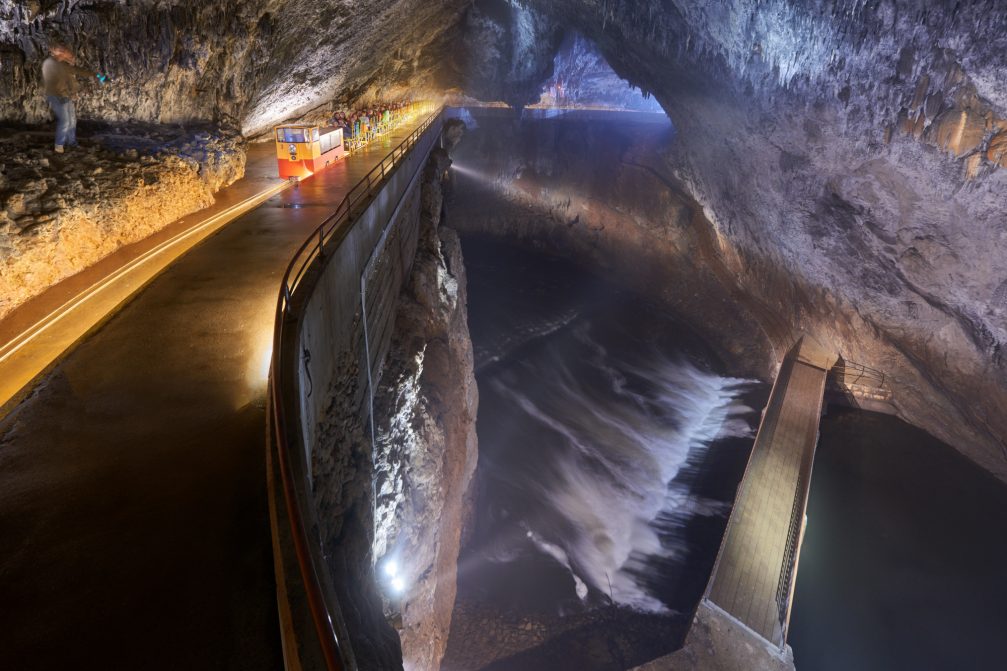
The underground river which formed the caves originally. (Image by Iztok Medja)
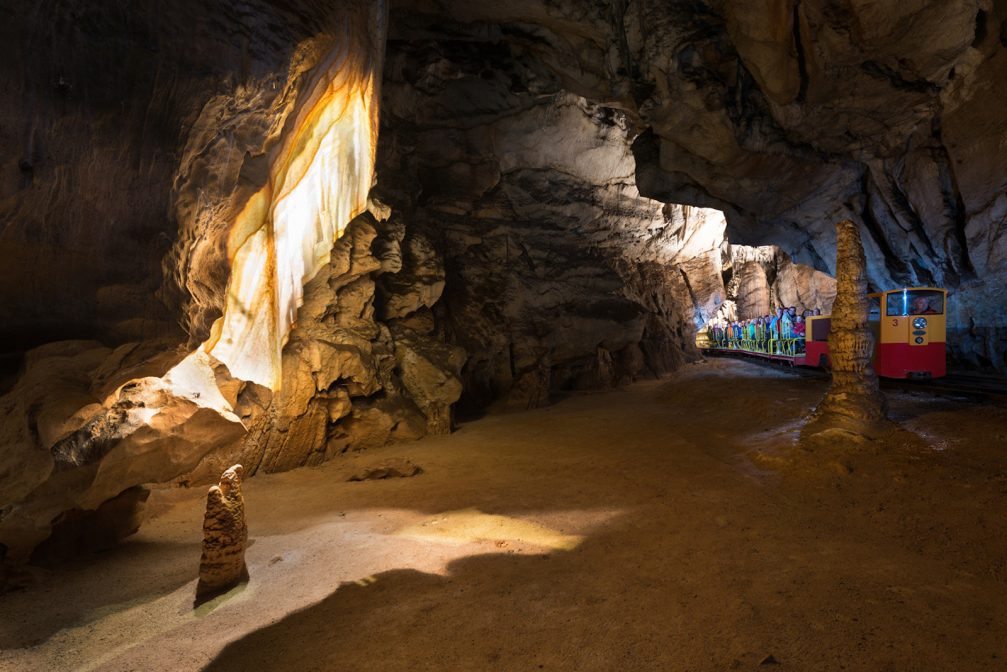
A very unique rock formations called curtains or draperies that look like folded curtains. (Image by Iztok Medja)

Visitors get to see 5 kilometres of the cave on one-and-a-half-hour tours; 3.2 kilometres of this is covered by an electric train. (Image by Iztok Medja)
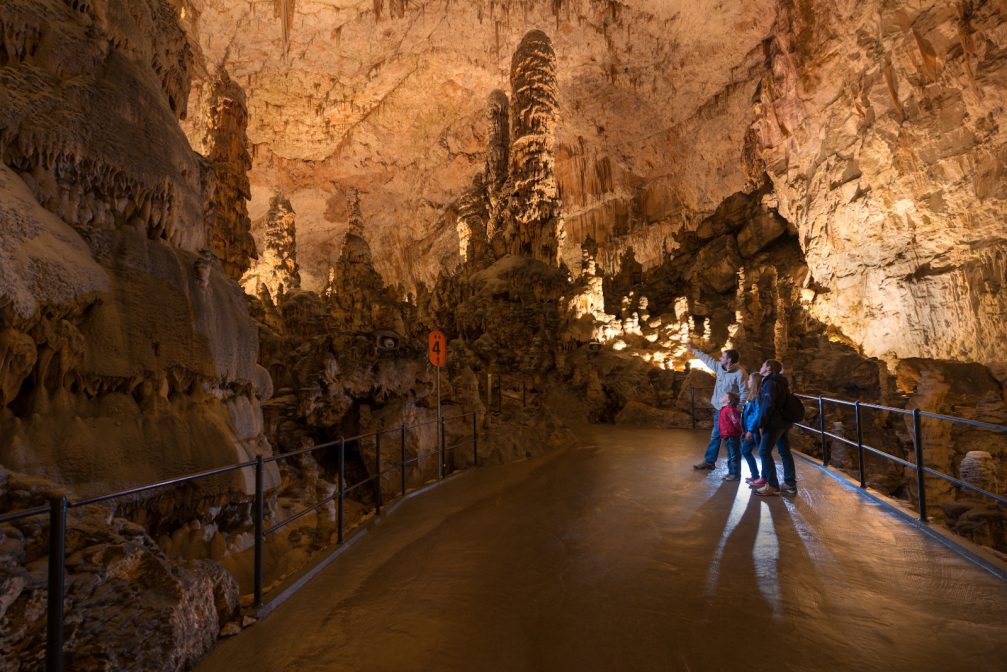
A real plus is there are no steps in the cave, only a continuous cement pathway after getting off the train. (Image by Iztok Medja)
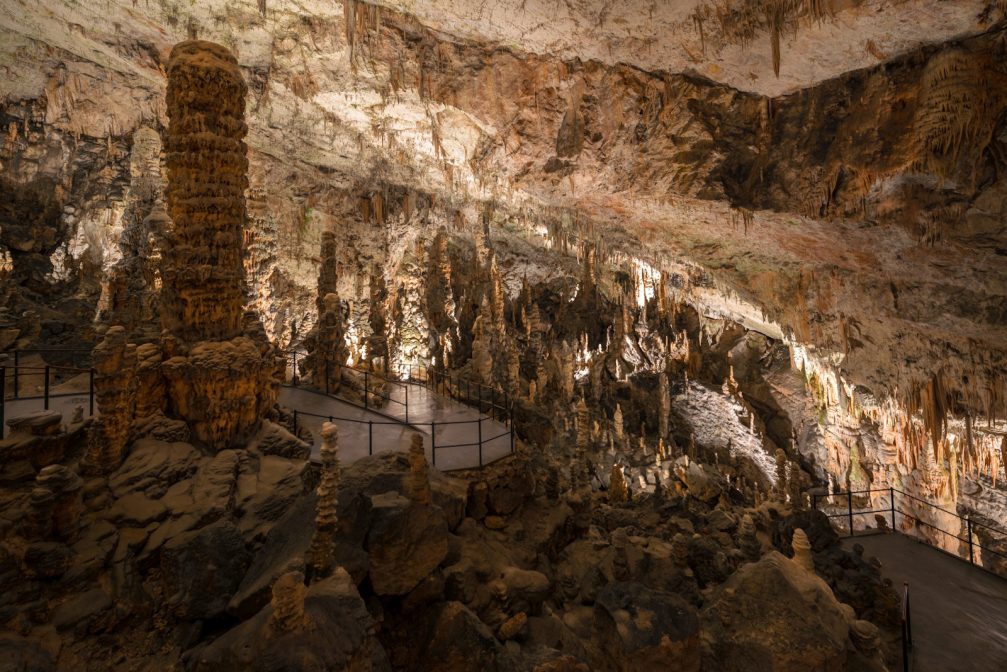
The train takes you 3 kilometres into the cave system. You then walk for 2 kilometres with a guide, who gives you the history and points out areas of interest. (Image by Iztok Medja)
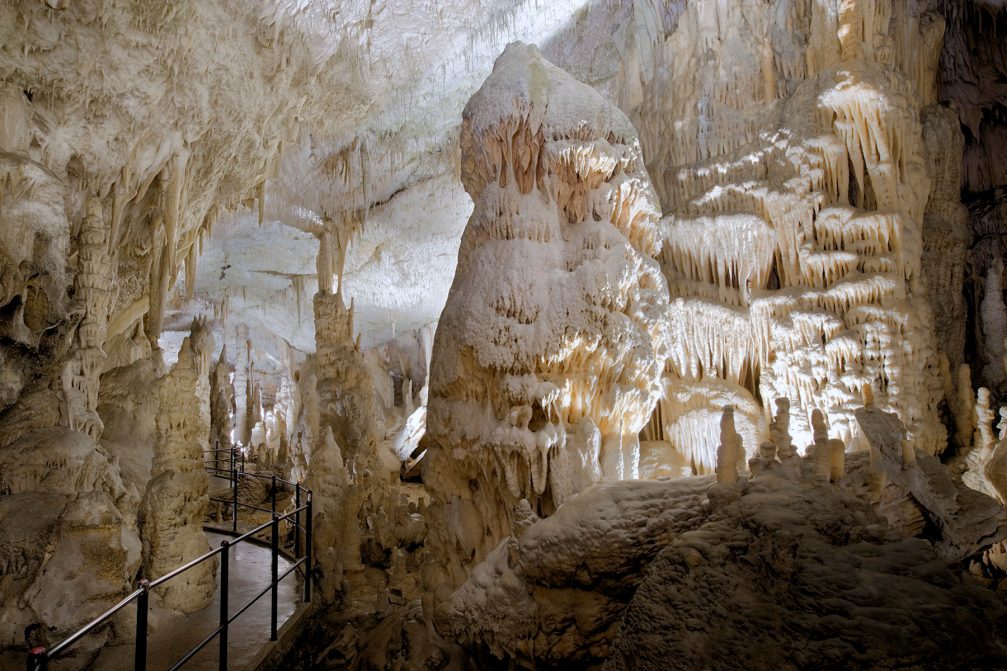
The beautiful White Hall where white stalagmites stand like dripping candles; the rocks’ pearly appearance is obtained from concentrated calcium carbonate. (Image by Miha Krivic)
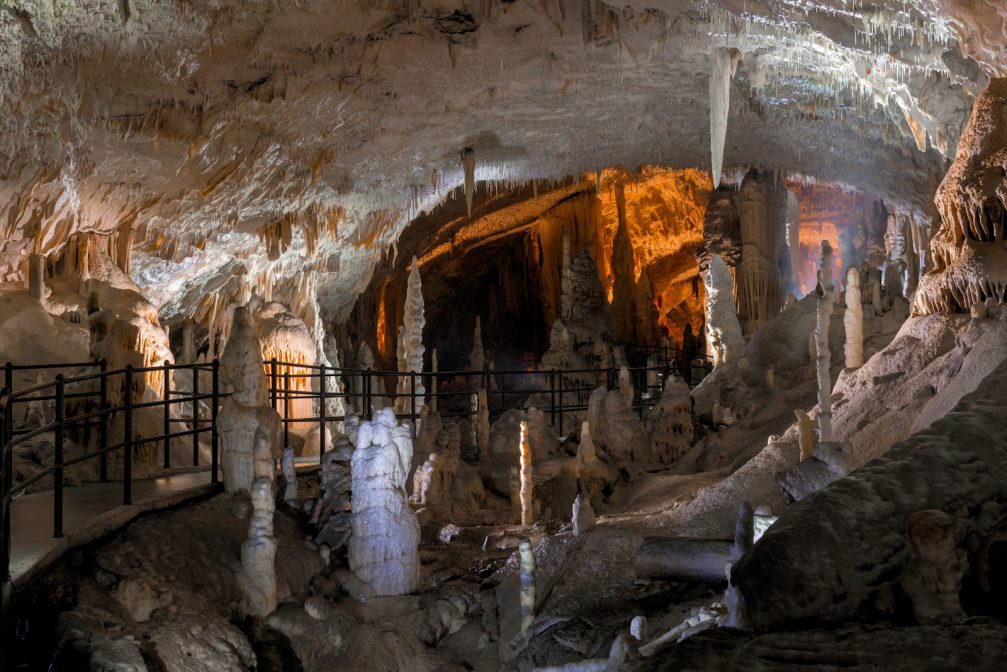
The forms in the White Hall are white and seem even more exquisite than those elsewhere in the cave. (Image by Iztok Medja)
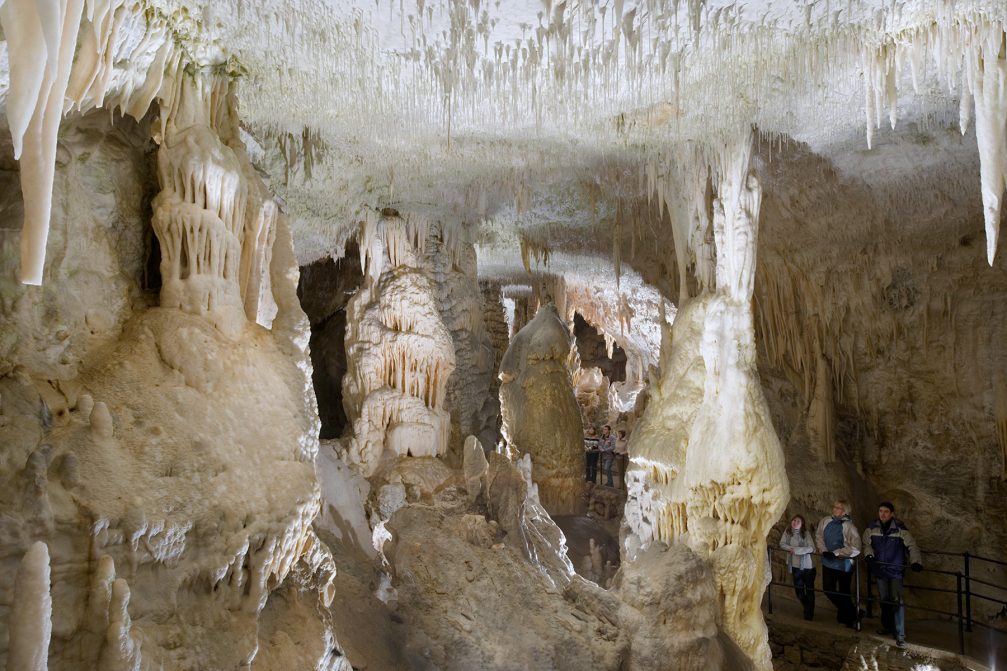
Another photo from the stunning White Hall with small spaghetti-like rock formations. (Image by Miha Krivic)
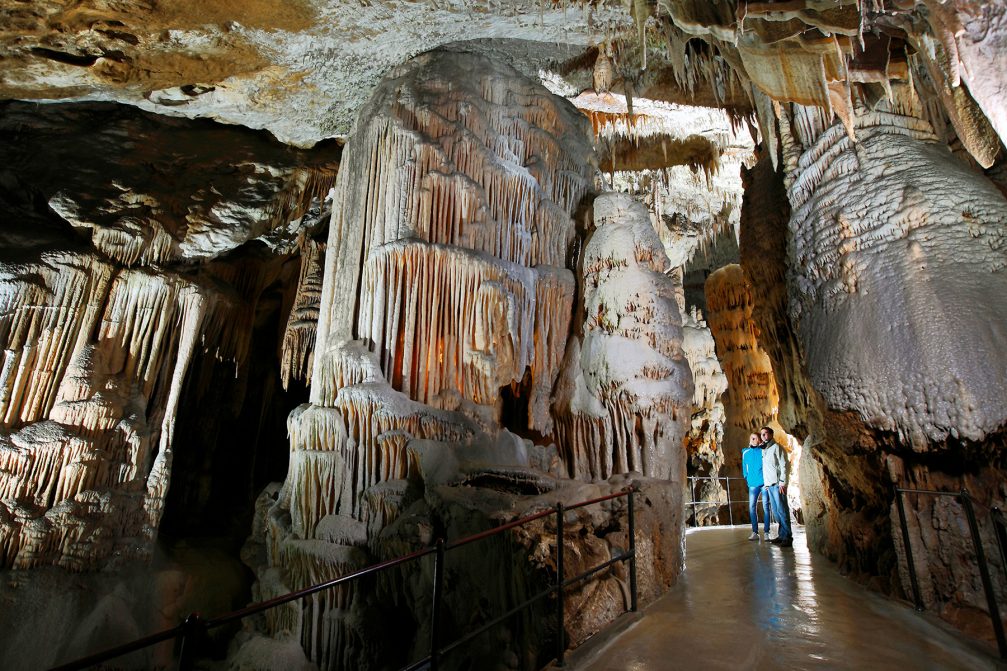
There are magnificent formations of stalagmites in dazzling white, red, green and even a chocolate in this subterranean world. (Image by Dragan Arrigler)
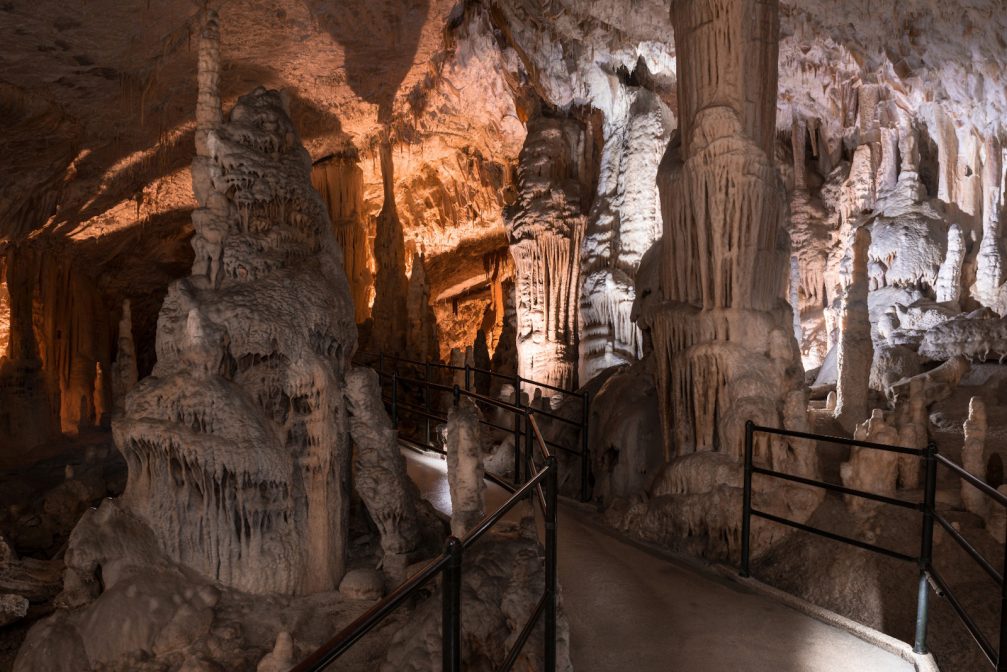
The formations of the stalagmites and stalactites are breathtaking, and very well lit and displayed. (Image by Iztok Medja)
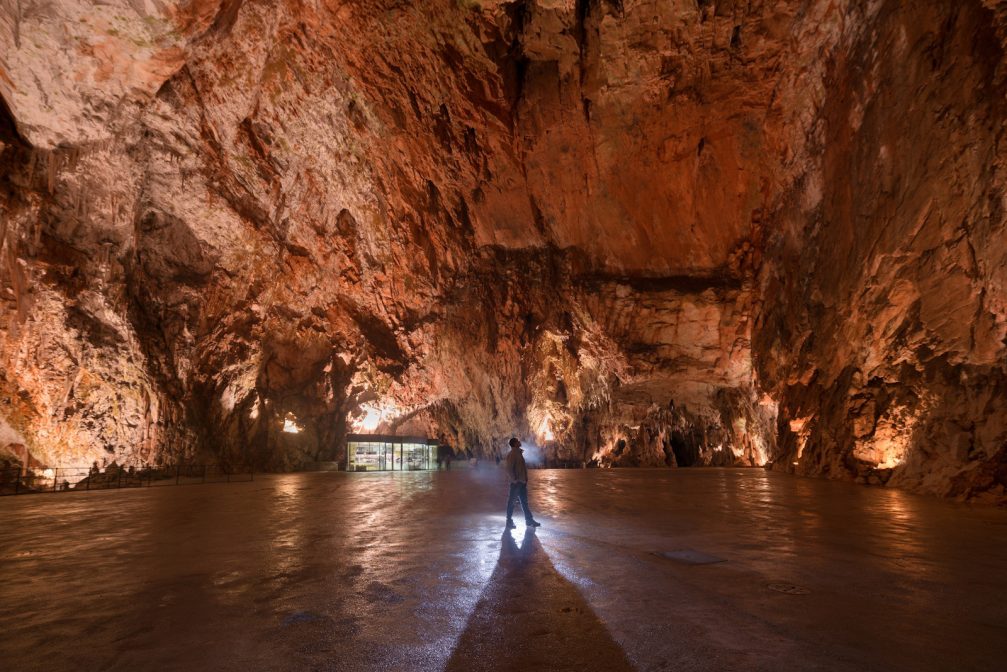
The magnificent Concert Hall, known for its stunning acoustics, has sufficient space for more than ten thousand people. Symphony orchestras, octets, and a variety of soloists perform here. (Image by Iztok Medja)
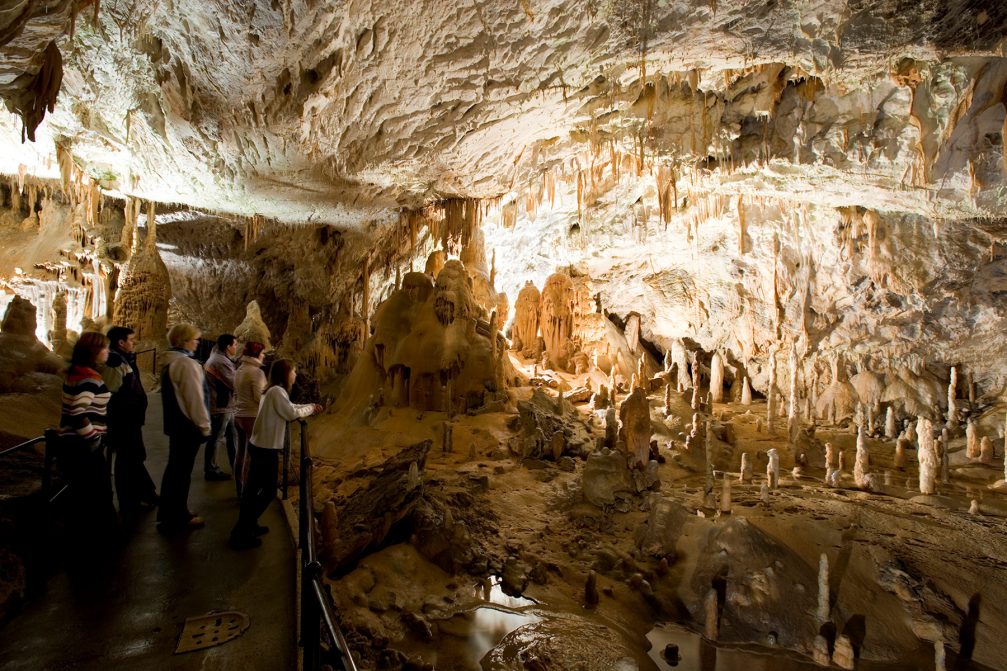
The Red Hall, obviously named for its reddish stalagmites. (Image by Miha Krivic)
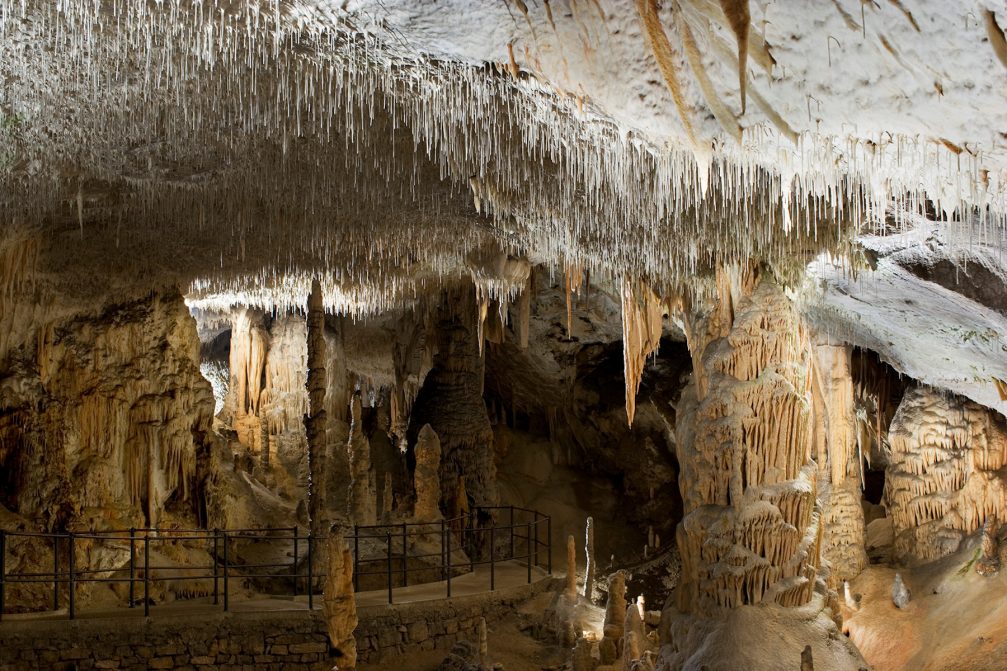
The famous Spaghetti Hall, which is full of tiny stalactites that hang from the ceiling. (Image by Miha Krivic)
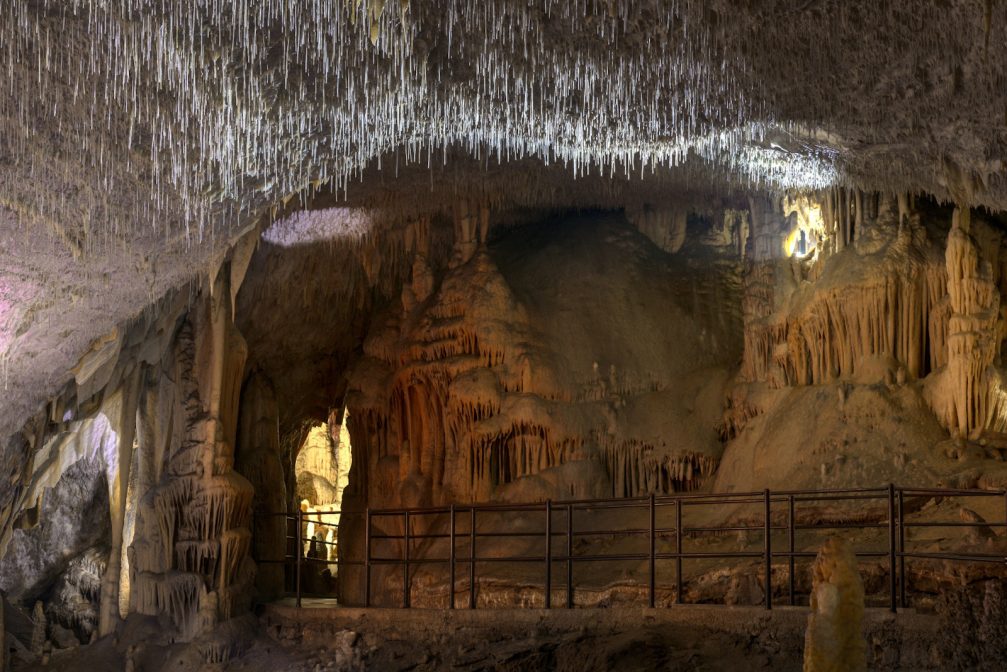
In the Spaghetti Hall, thousands of thin, white stalactites hang from the top of the cave. (Image by Iztok Medja)
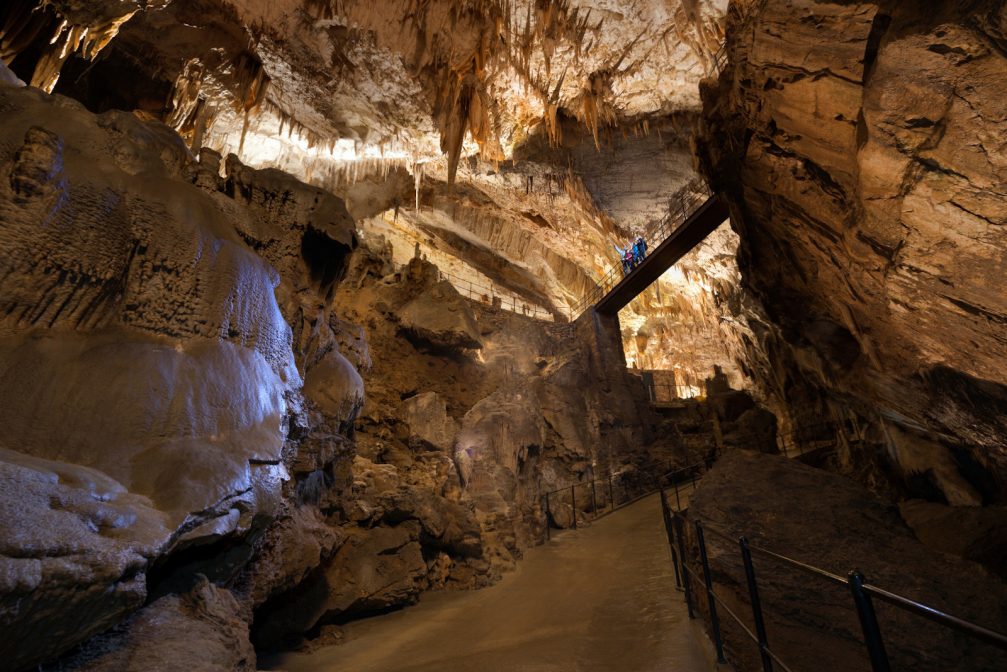
The Russian Bridge inside the cave was built in 1916 by the Russian prisoners of war. (Image by Iztok Medja)
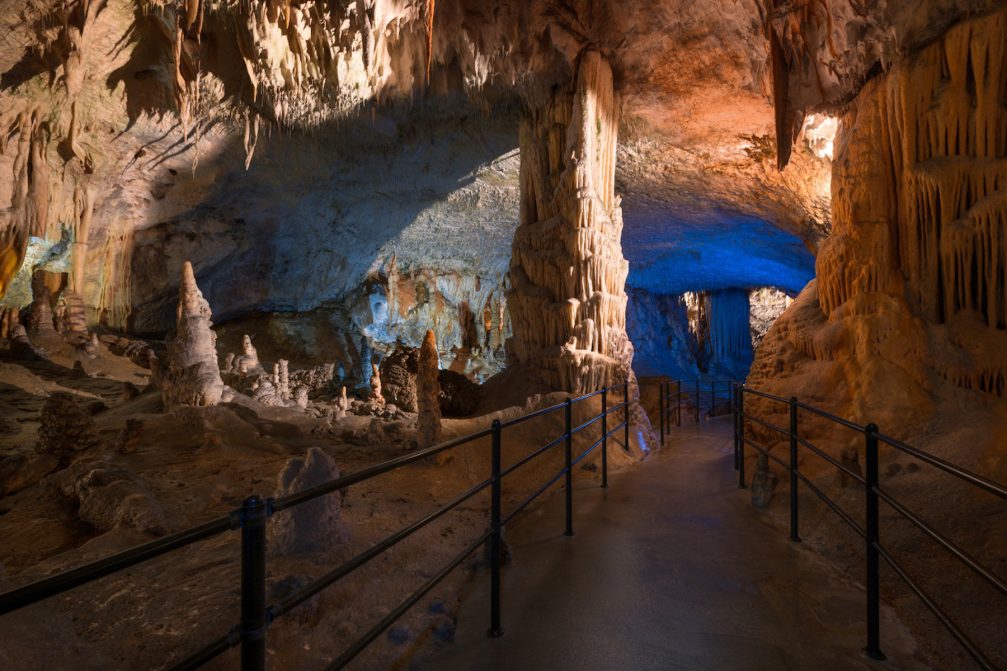
Like all caves, it is damn and moist with water dripping all over the places. However, the path in the cave is not so slippery as one would expect as the surface of the path is laid with anti-slip material. (Image by Nea Culpa d.o.o.)
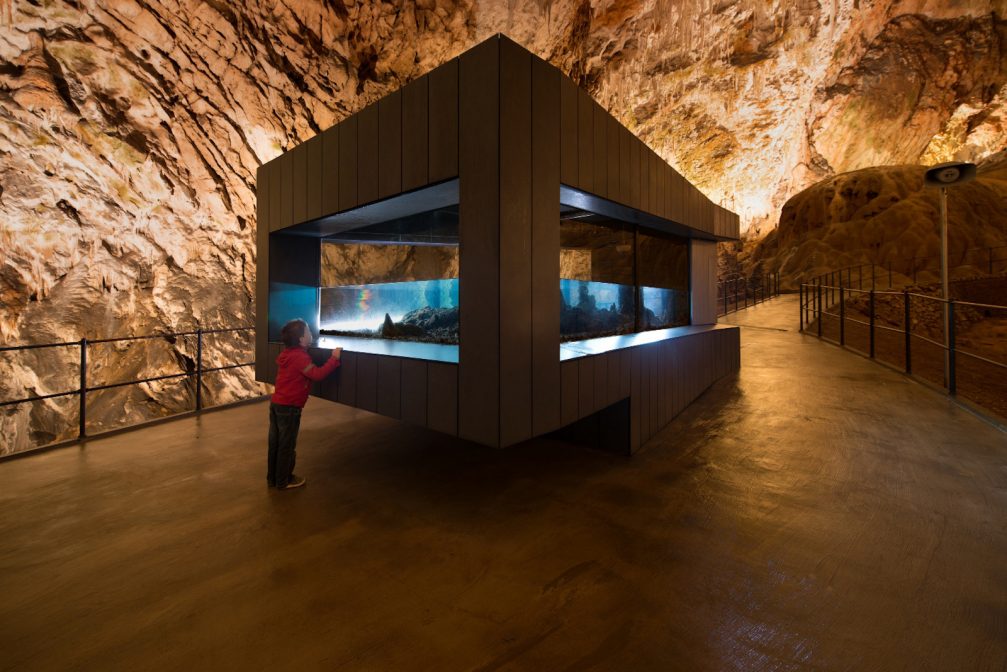
In the cave, there’s also an aquarium that has some of the animals that live in the caverns. (Image by Iztok Medja)
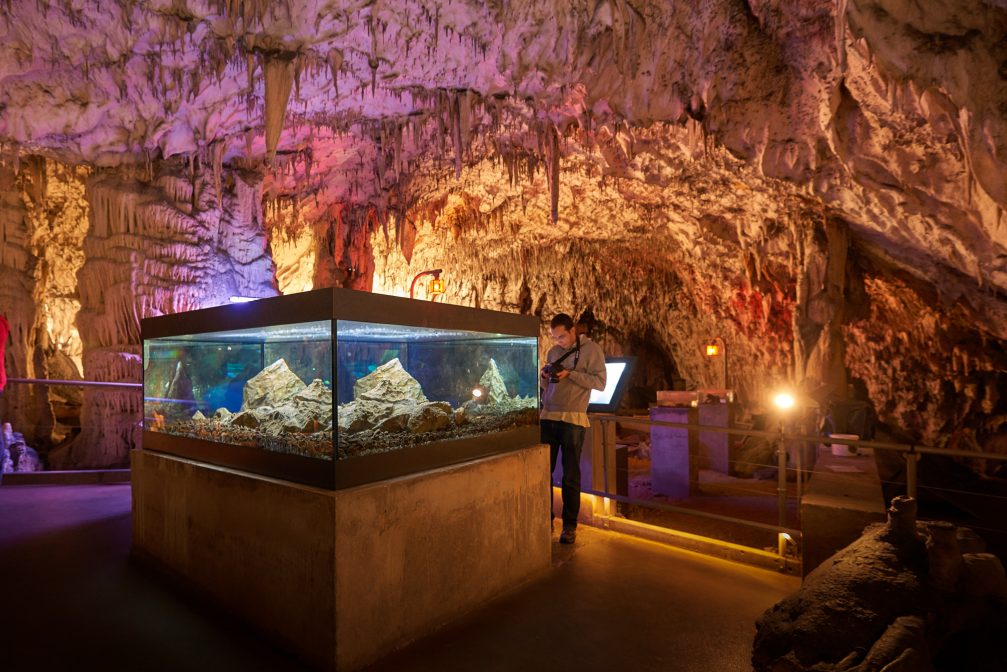
The vivarium, where you can see a rare amphibian which belongs to the salamander family i.e. the human fish and some other cave-dwelling creatures. (Image by Iztok Medja)

Info plaques with interesting facts about the cave-dwelling creatures. (Image by Iztok Medja)
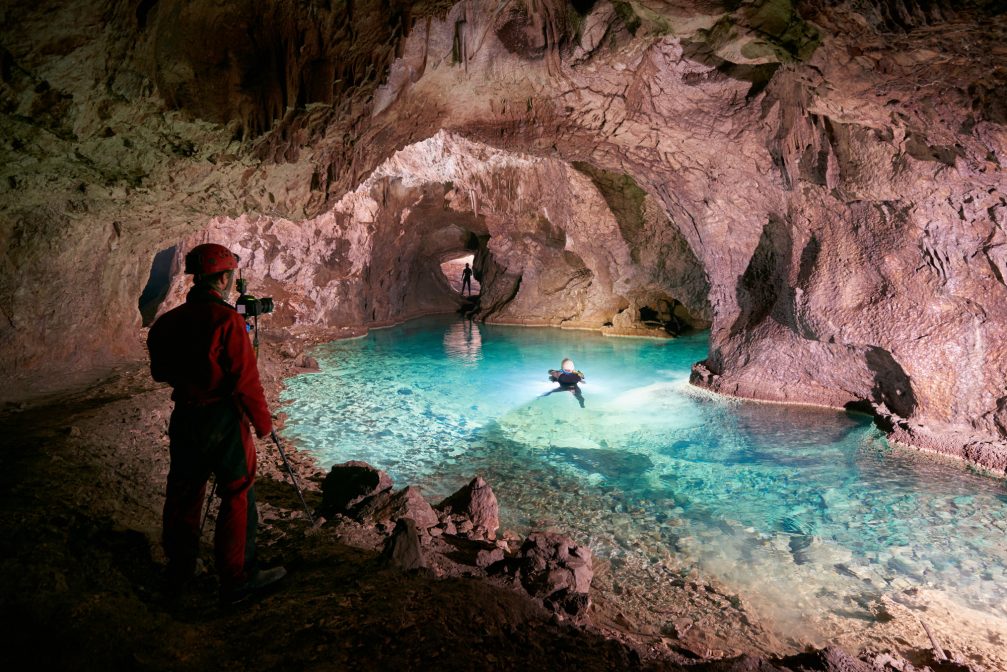
A very interesting and beautiful part of the Postojna cave system called the Tartarus. (Image by Iztok Medja)
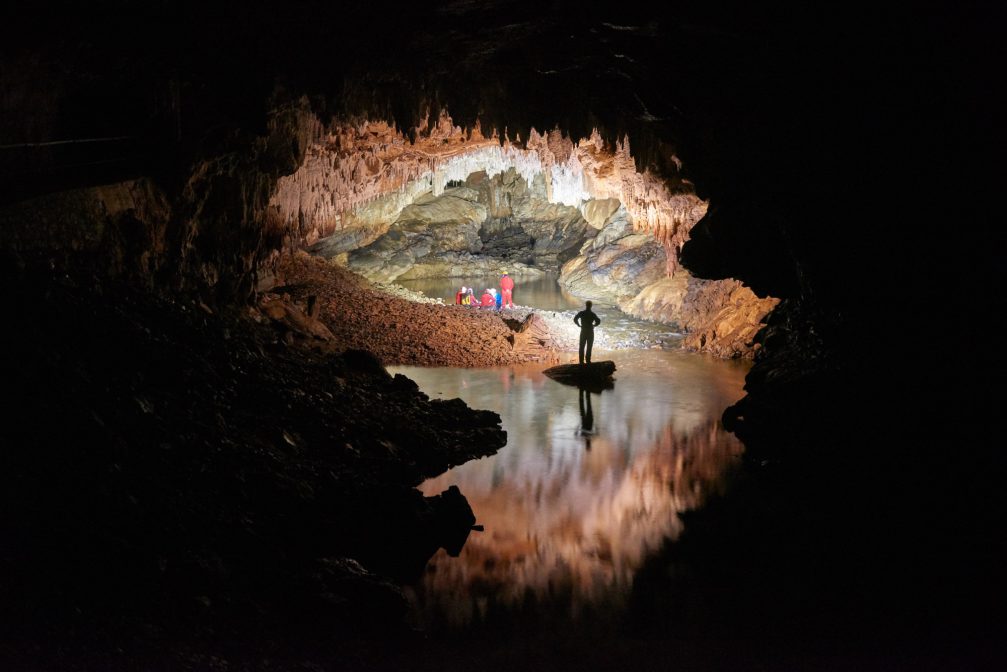
Another photo of the Tartarus. (Image by Iztok Medja)
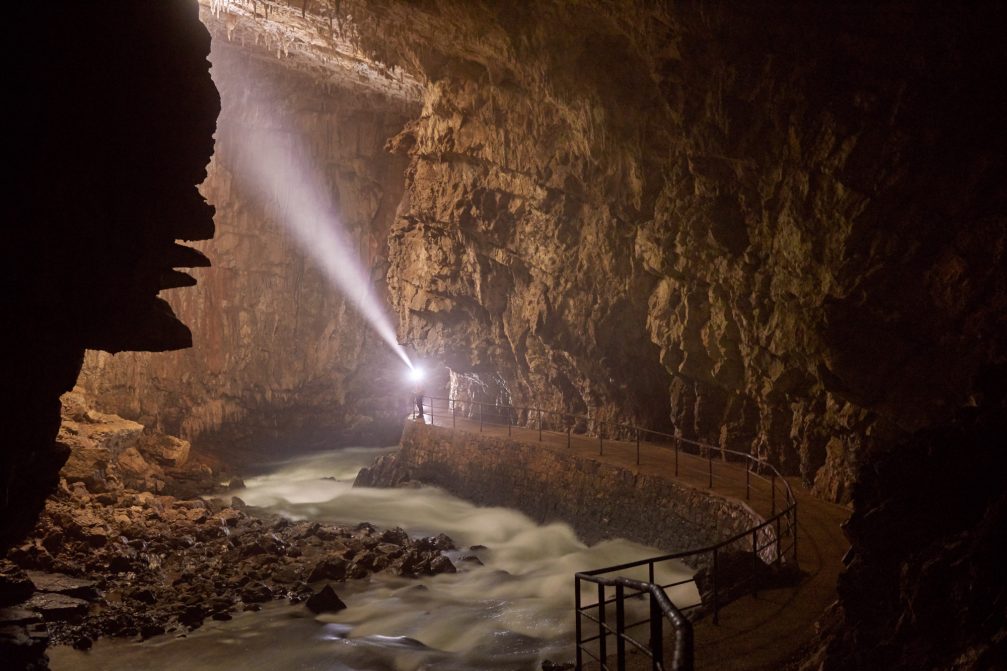
The Pivka Cave is part of the Postojna cave system. Its entrance is located 5 kilometres from the main cave. It can be reached by descending 317 steps to a depth of 65 metres. (Image by Iztok Medja)
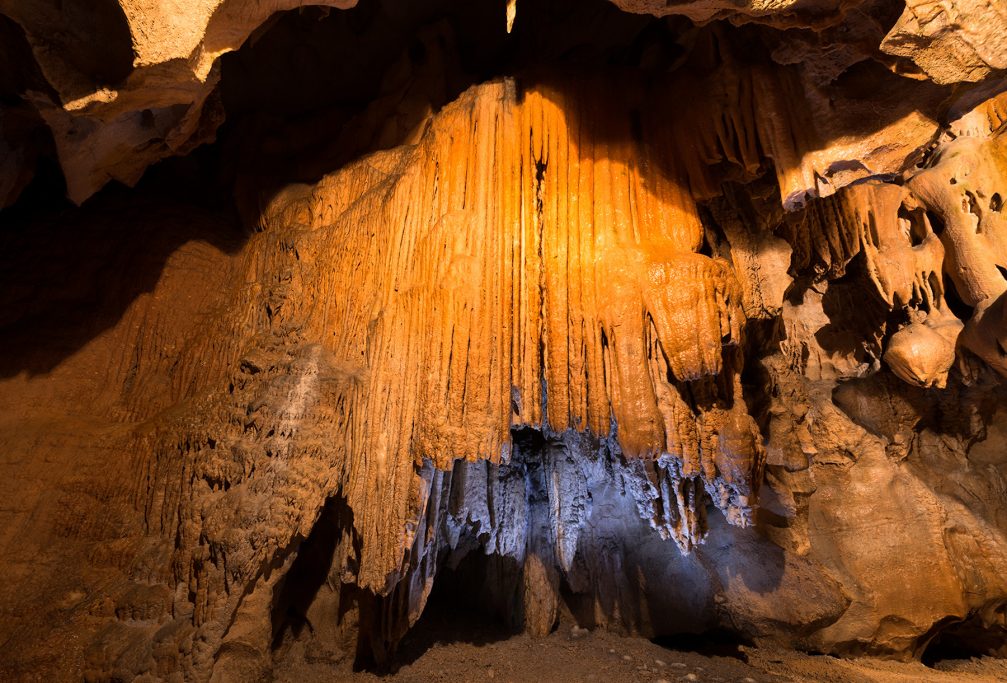
The Pivka cave is 5 kilometres long and is full of interesting rock formations. (Image by Iztok Medja)
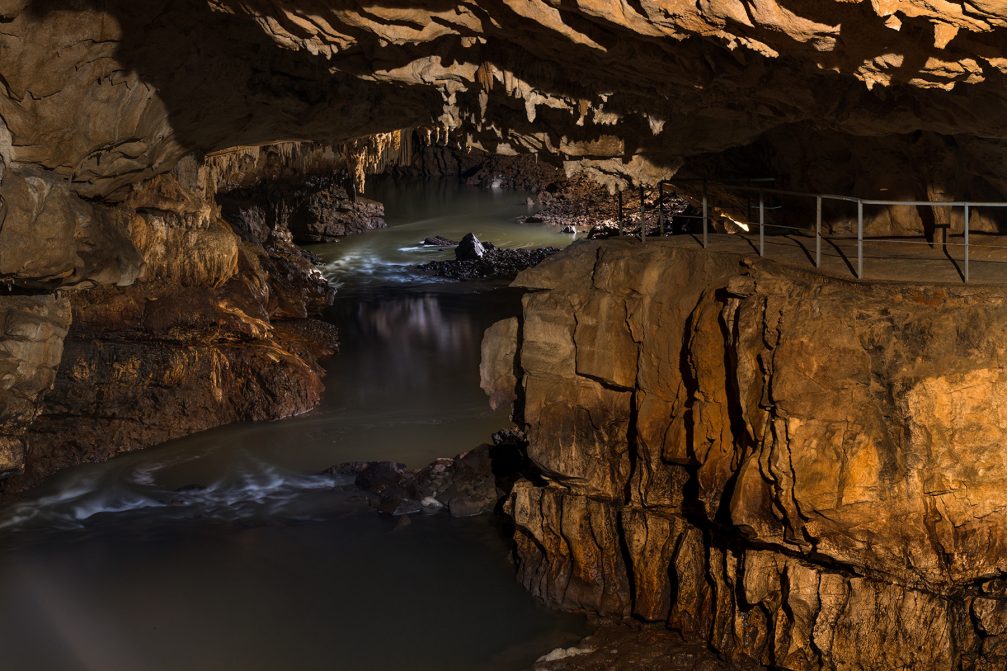
Two of the cave’s five kilometres can be visited on a cave tour and also feature electric lighting. (Image by Iztok Medja)
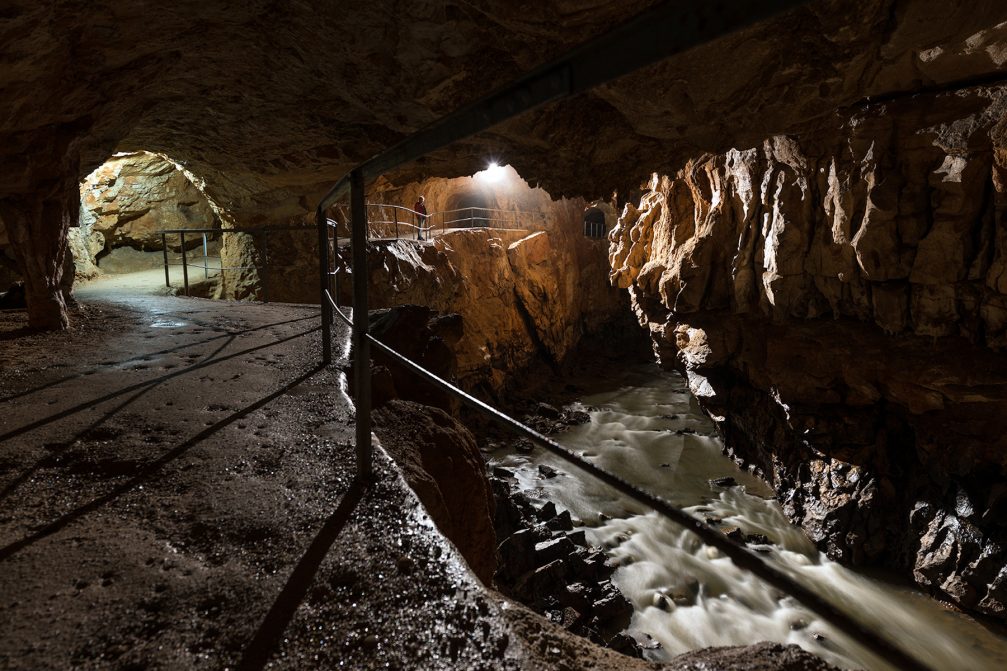
The trail leads visitors along the river Pivka towards the Black Cave. (Image by Iztok Medja)
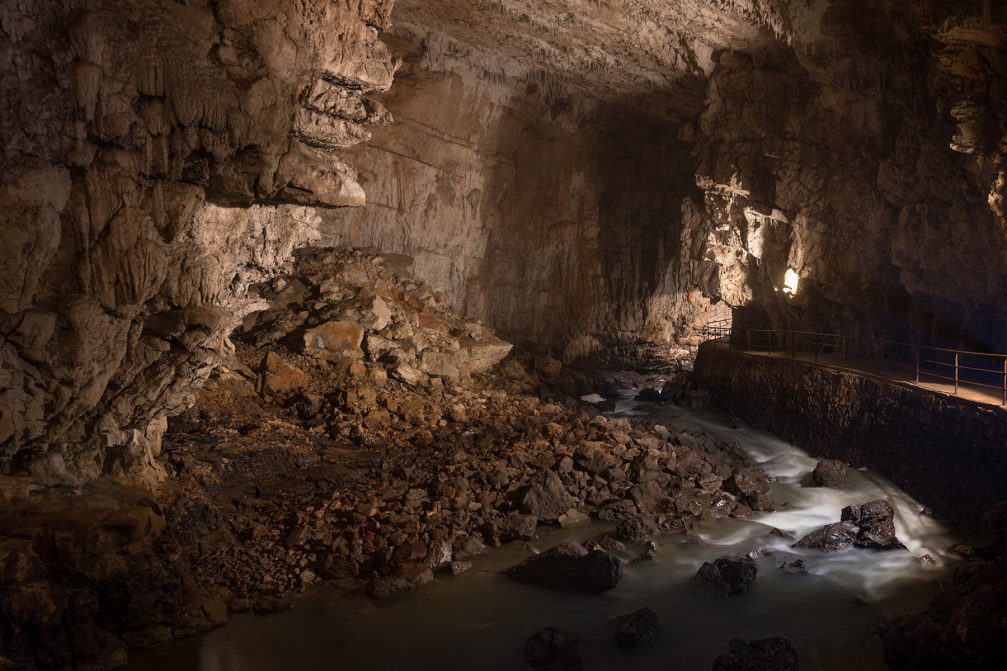
The Pivka and Black Caves are the last two caves along the subterranean river Pivka before it disappears completely. (Image by Iztok Medja)
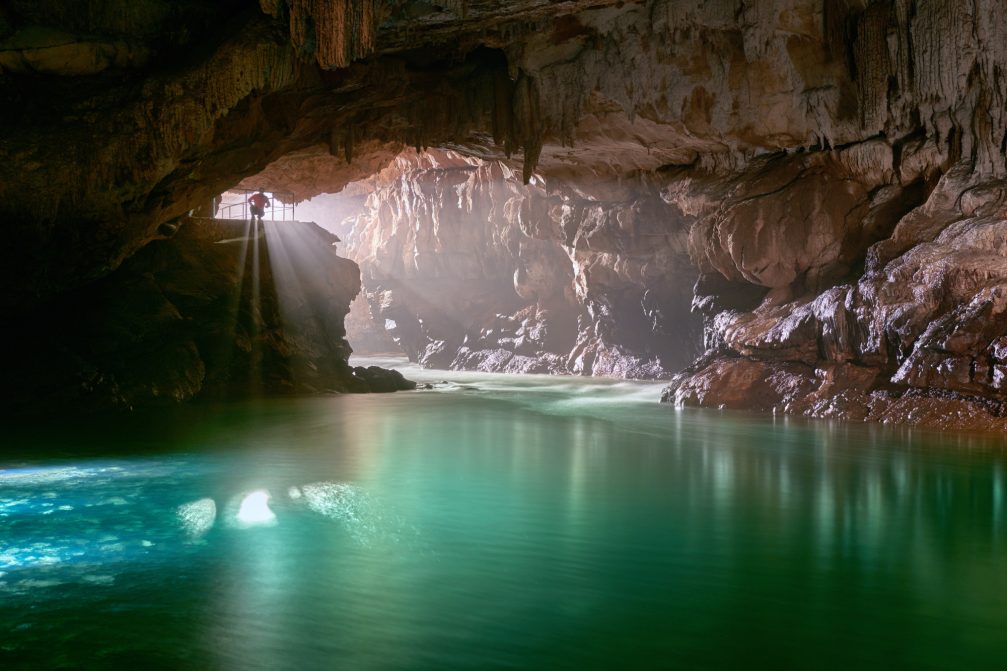
The most appealing Pivka Cave feature is the view of the river, especially at times of high water levels. (Image by Iztok Medja)
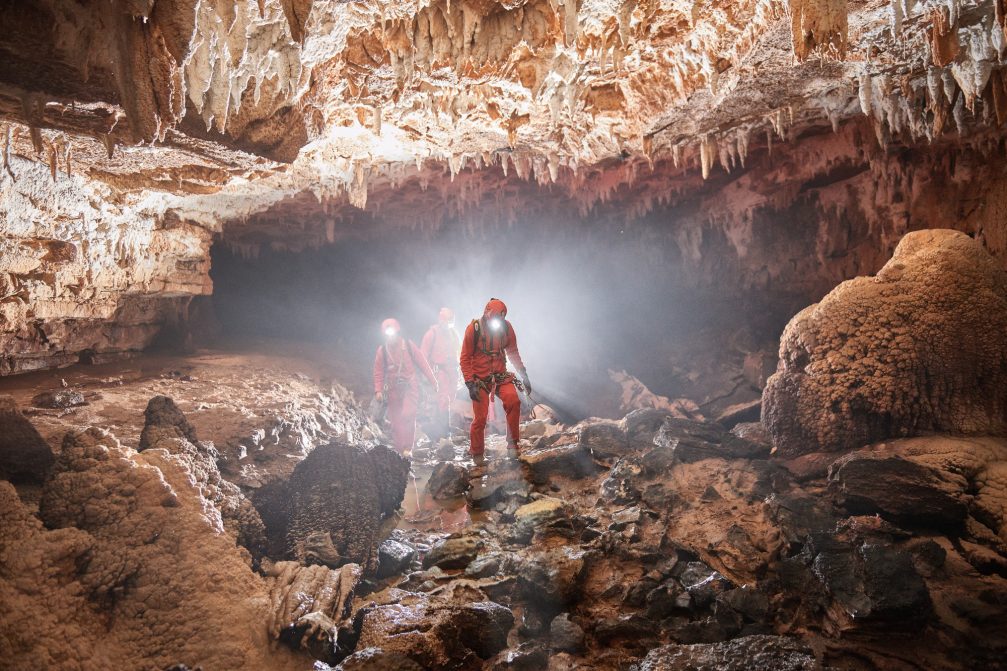
The Postojna Caves system was discovered in the 13th century, explored in the early 18th century and opened as a tourist attraction in 1819. (Image by Iztok Medja)
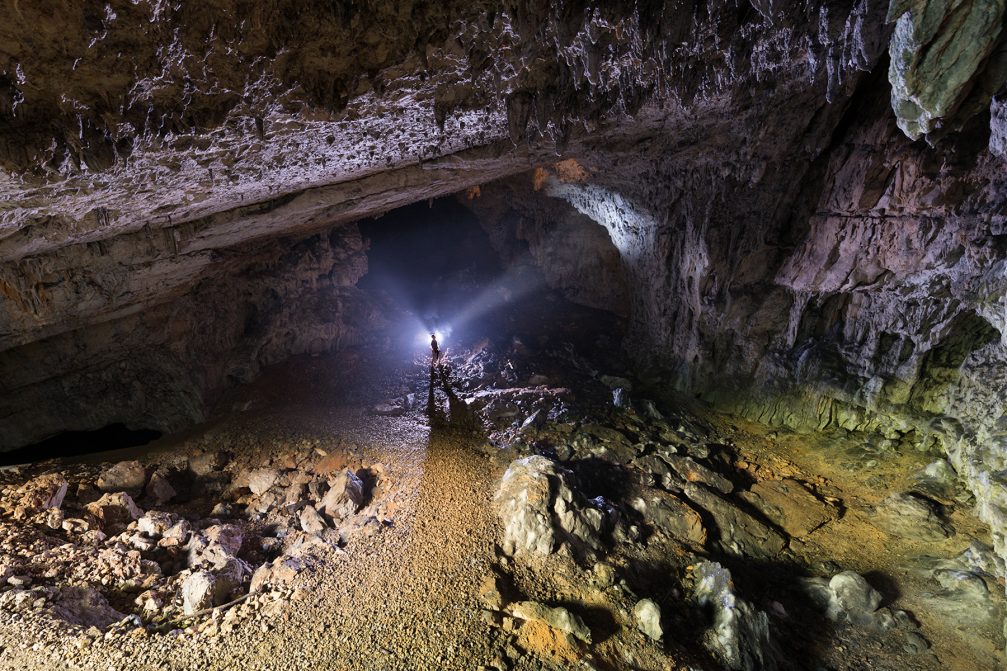
The Black Cave used to be known as a separate, unconnected cave, however, later explorers discovered it’s connected to the Postojna cave system. (Image by Iztok Medja)
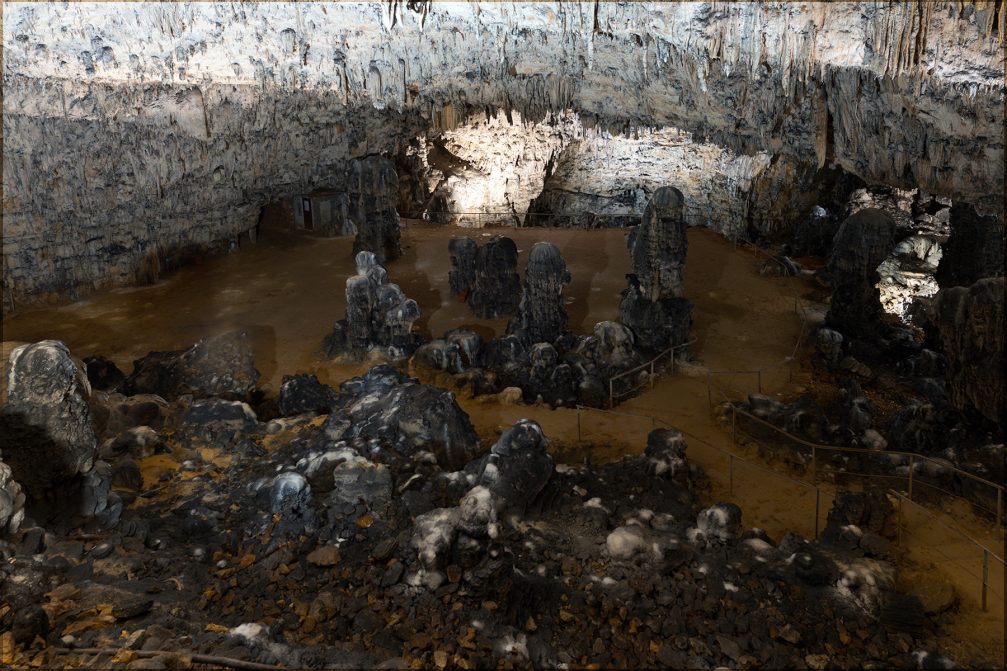
The Black Cave boasts wonderful flowstone formations. (Image by Iztok Medja)
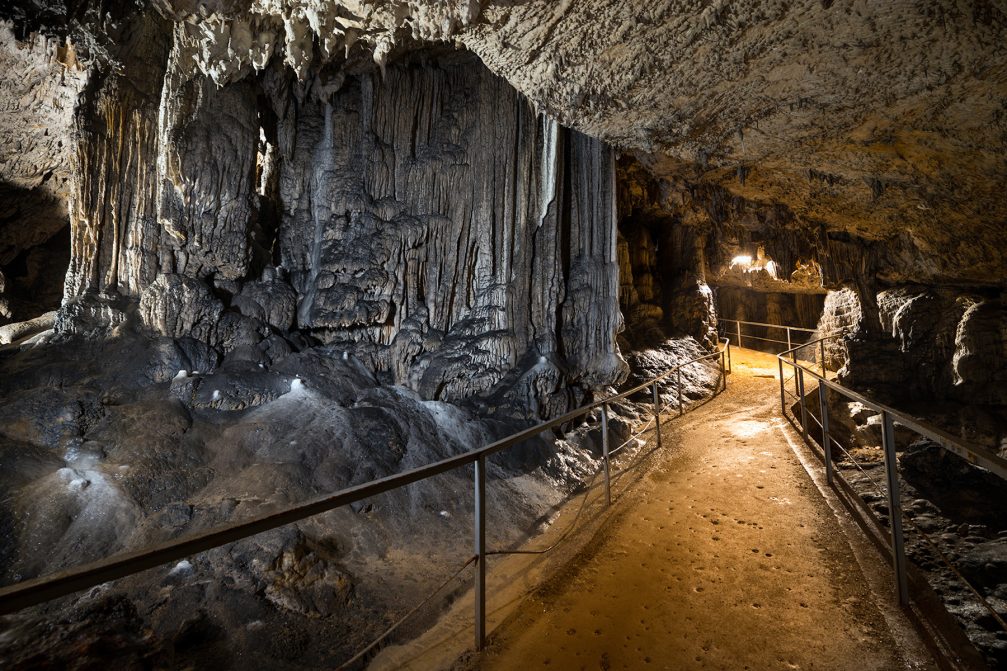
The Black Cave is a particularly good choice for cave lovers who would like to explore more difficult passages and water barriers. (Image by Iztok Medja)
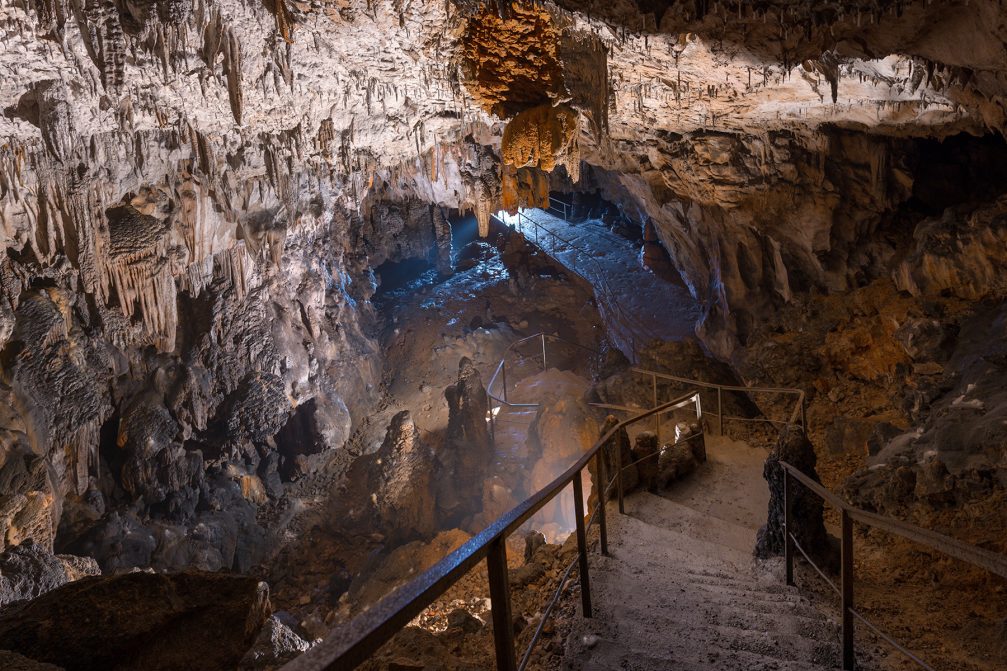
The 3.3-kilometre-long Black cave boasts large halls and horizontal passages, as well as dark speleothems, which gave the cave its name. (Image by Iztok Medja)
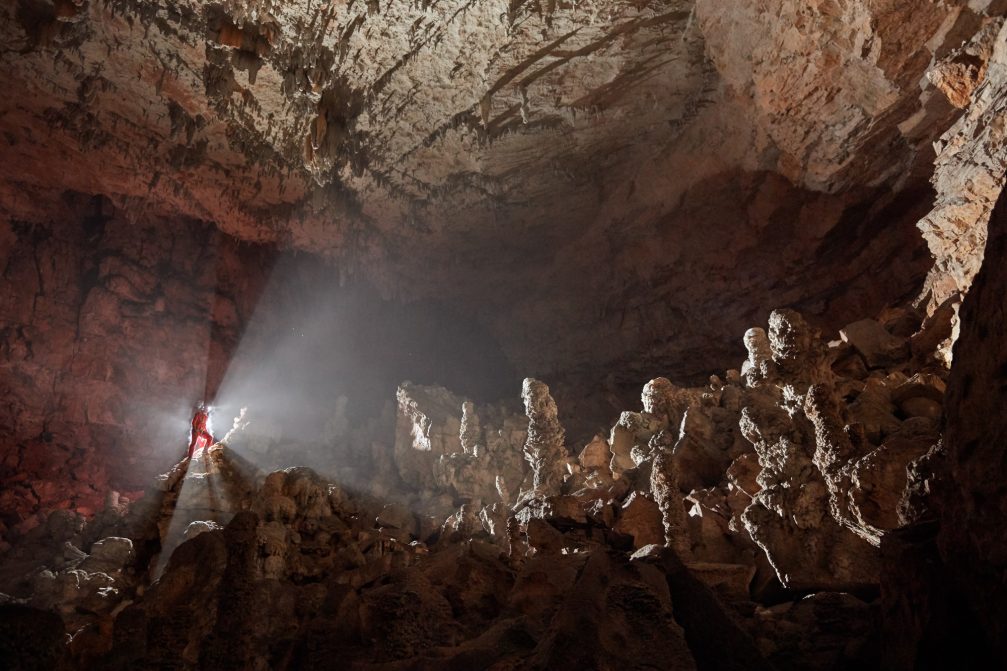
The 89-metre-deep Magdalena Cave is also part of the Postojna cave system. Although a small cave, it is very rich in formations, landscape and wildlife. (Image by Iztok Medja)
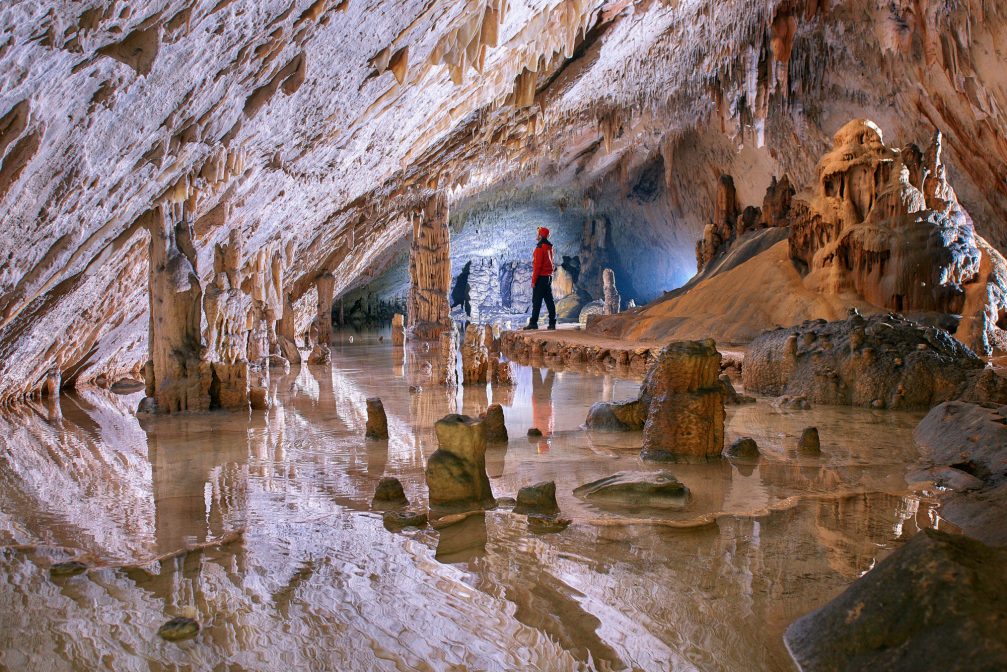
The Otok Cave is a dry, horizontal cave with an incredible variety of cave formations. It is connected to other parts of the Postojna Cave system through the passages of the subterranean river Pivka. The cave was one of the main filming locations of the legendary movie about the Indian chief Winnetou, based on a novel by Karl May. (Image by Iztok Medja)
If you have visited a cave before you haven’t visited one as stunning as the Postojna Cave. Do you know another cave where you have to take a train into the heart of the cave before joining a walking tour? It’s fantastic. Very large, very colourful, very interesting, one of a kind. The structures are extremely varied here – so many different shapes have formed over the years. Very impressive and well worth a visit!
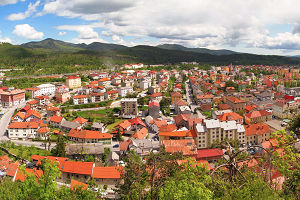 Postojna is a modern town in southwestern Slovenia, where most people come to visit its remarkable cave. The town was first mentioned in historic documents in 1226. Today it has about 9,200 inhabitants and is the economic, administrative, educational and cultural centre of the Notranjska region of Slovenia. Thanks to Postojna's transformation into a tourist town, there are now four hotels and many other guesthouses and private accommodation options for every traveler's budget in the town. An array of restaurants, cafés and bars can be found in the town too. |
| |
|---|
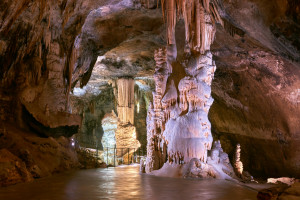 Overall Rating: The Postojna Cave is a stunning underground system of passages, caverns, magnificent halls and stunning stone sculptures that are more than 20 km long. It is the most visited cave in Europe and the only cave with a double-track railway in the world, where visitors can experience a thrilling train ride through the extraordinary beautiful underground landscape. Visitors explore almost 6 km of the cave. |
| |
|---|
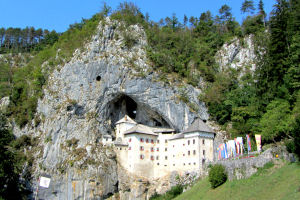  Overall Rating: The Predjama Castle is a beautiful renaissance castle built in the mouth of a cave in the idyllic village of Predjama in the Karst region of Slovenia. It was constructed in the Gothic style in the 13th century and is considered to be one of the more significant architectural masterpieces of that time. To prevent easy access, the castle was built under a natural rocky arch high in the stone wall. |
| The accommodation options in Postojna can be divided into six main categories: hotels, guesthouses, B&Bs, apartments, farm stays and hostels. |
  Thanks to Postojna’s transformation into a tourist town, there are now five hotels in Postojna, so, if you're planning to visit Postojna and would like to stay in a hotel, read on and find out which are the ones that we recommend. |
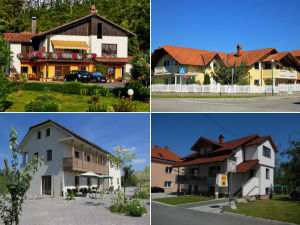  A nice guest house offers a friendly and relaxed travelling experience. Most Postojna guesthouses are family owned and operated, and offer a homey atmosphere and friendly service. There are several good guesthouses in Postojna and the surrounding area, find out which are the ones that we recommend the most. |
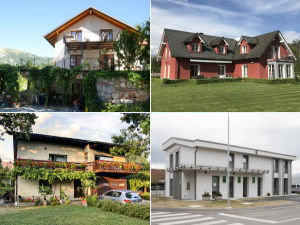  Many local residents in Postojna offer apartments for rent in their houses. It’s a very popular budget-oriented option when you are staying in Postojna. But be careful, the rates and quality vary seriously, so always do a good research before you book an apartment! |
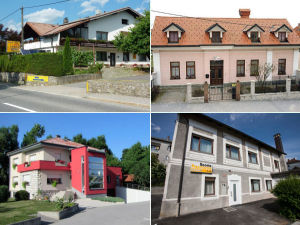  Bed-and-breakfasts are always a good lodging option. They are a great place to meet fellow travelers, learn more about the area from knowledgeable hosts, and enjoy a hearty breakfast before hitting the road. There are a few good B&Bs in Postojna, find out which ones we recommend the most. |
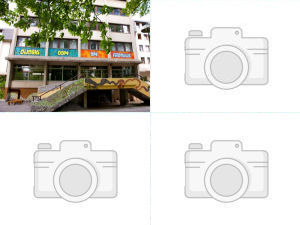  Hostels provide wallet-friendly, sociable accommodation where guests can rent a bed in a dormitory or a private room and share a bathroom, lounge and usually a kitchen. Postojna is a small town and currently only has one hostel. Luckily it's a very nice one. Find out if it suits your needs. |
  Farm stays can encompass a range of accommodations from rural bed and breakfasts to working farms. Some farmstays are quite luxurious, with comfortable rooms and delicious homemade breakfasts each morning; in this sort of accommodation, your closest contact with the farm itself may be a leisurely stroll across a rolling pasture. Other farmstays offer more hands-on activities, which could include milking cows, feeding livestock, collecting eggs, etc. If you want a nice experience on a farm, stay at one of the farmstays listed here, they are the best in the Postojna area and really worth staying at. |


